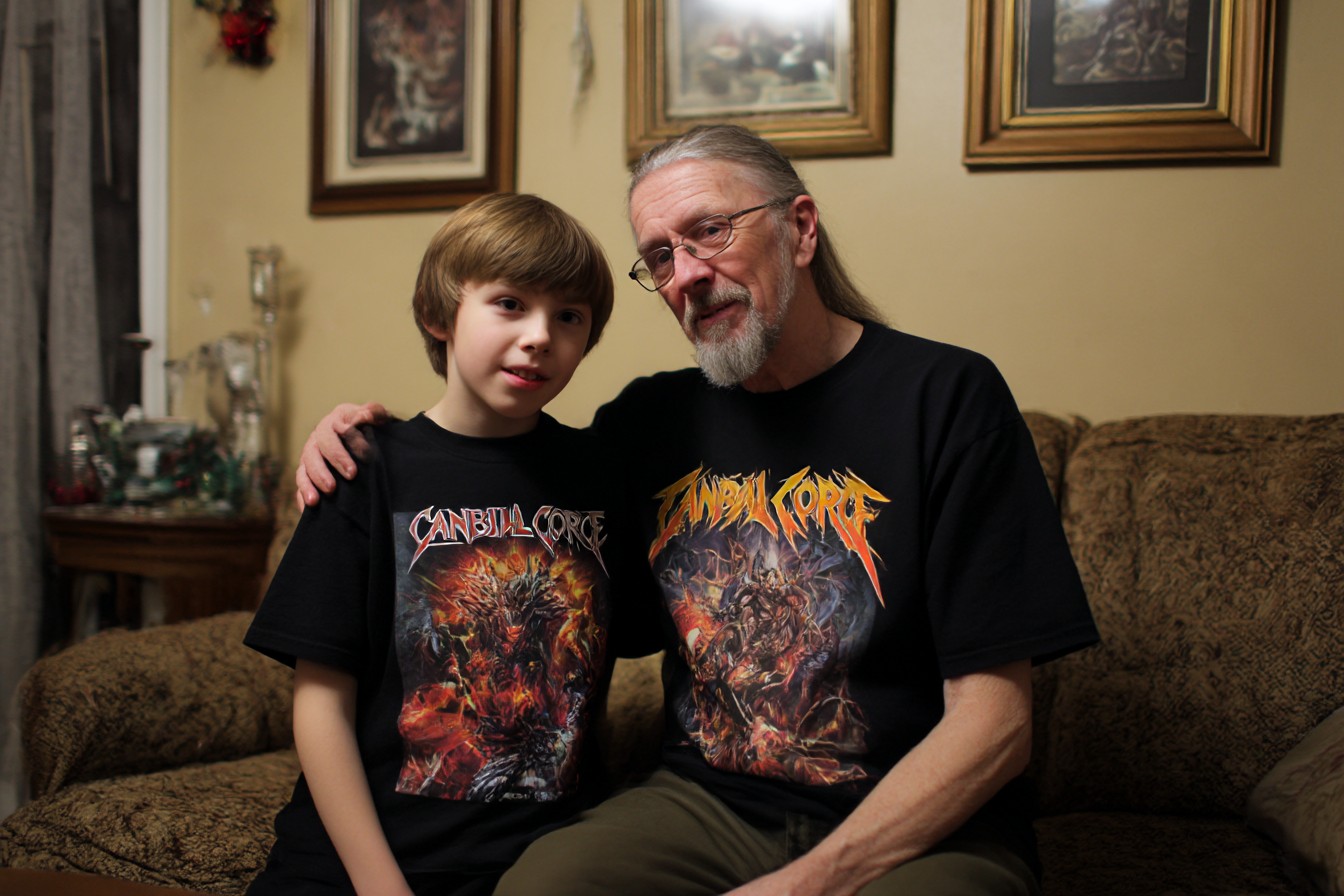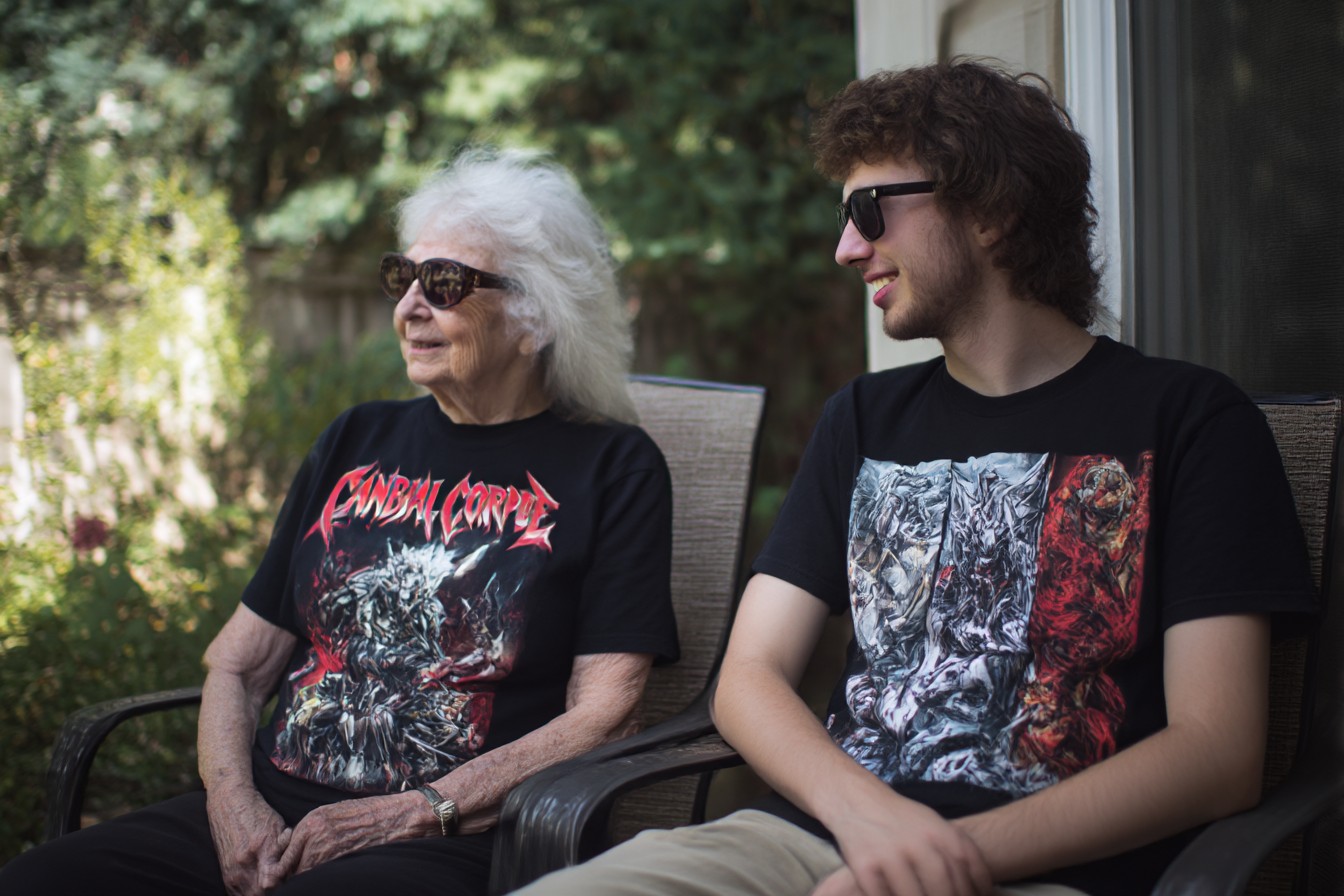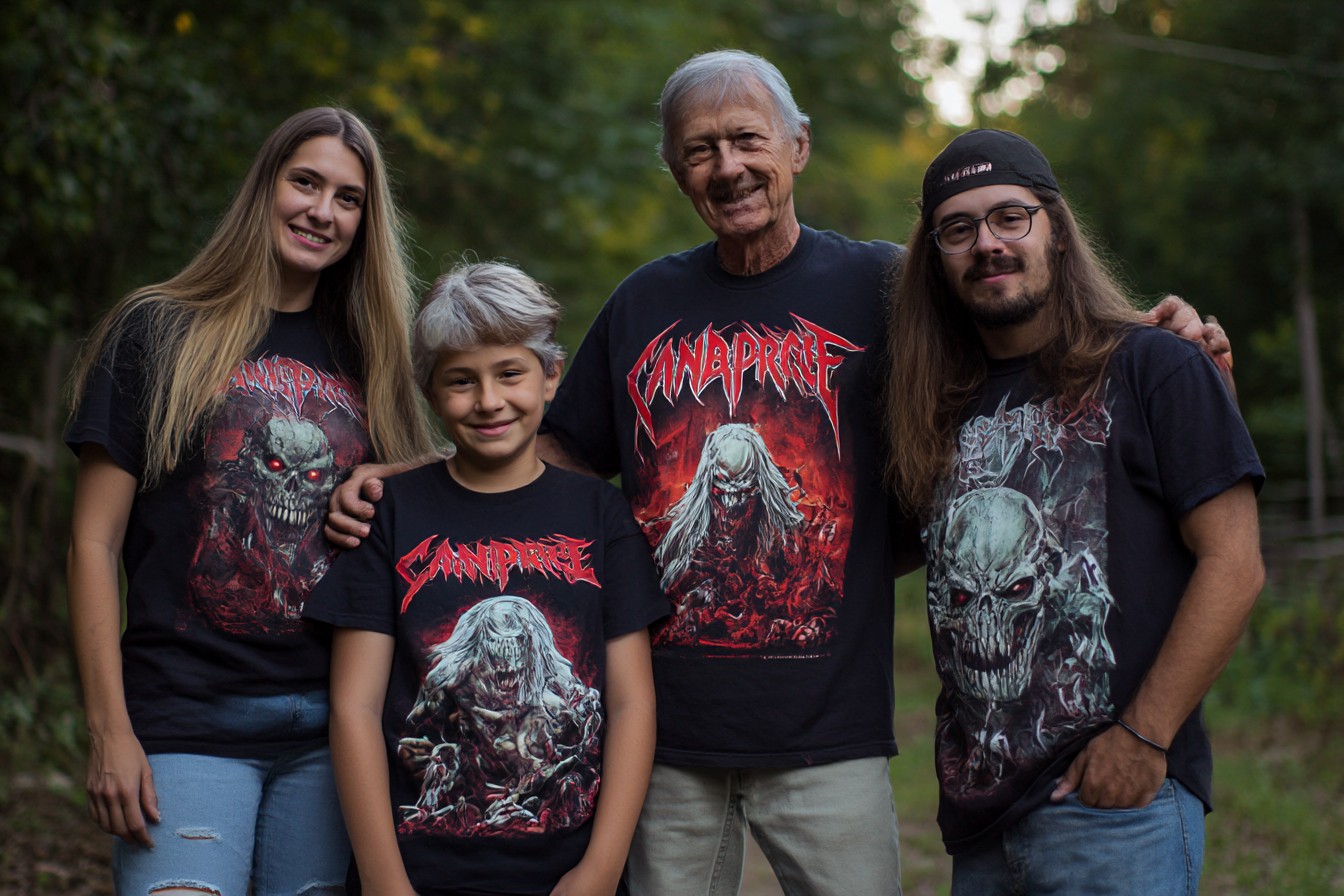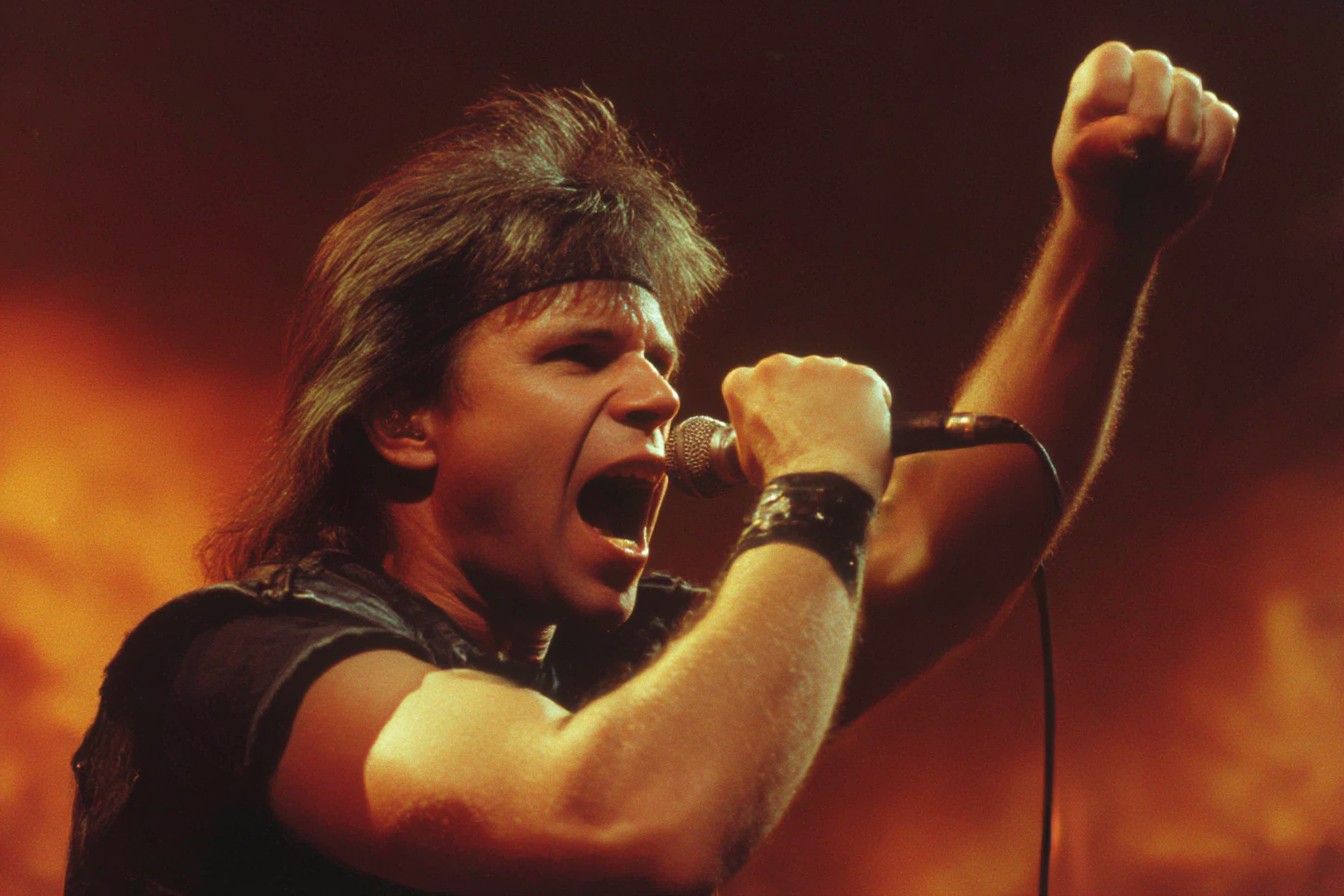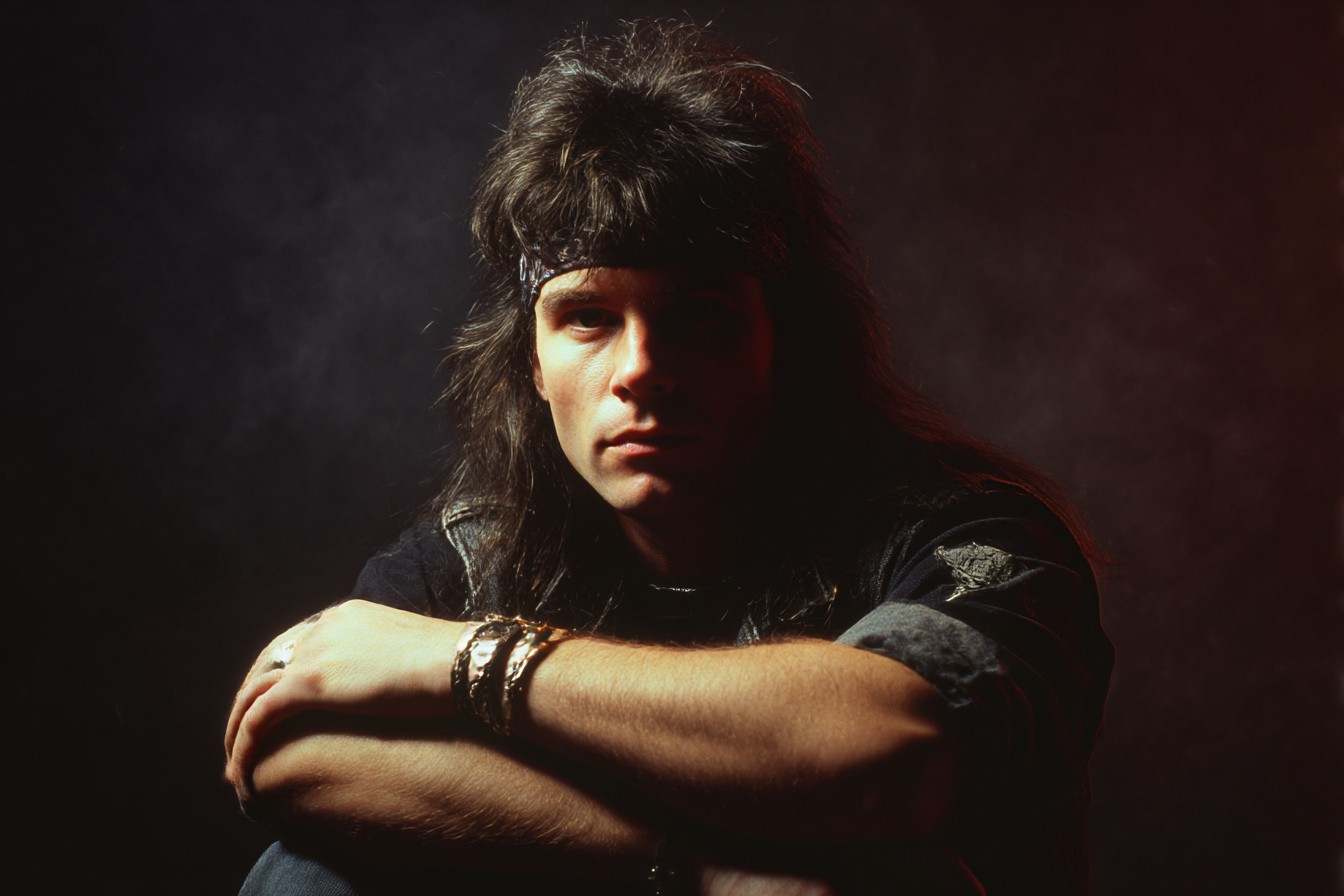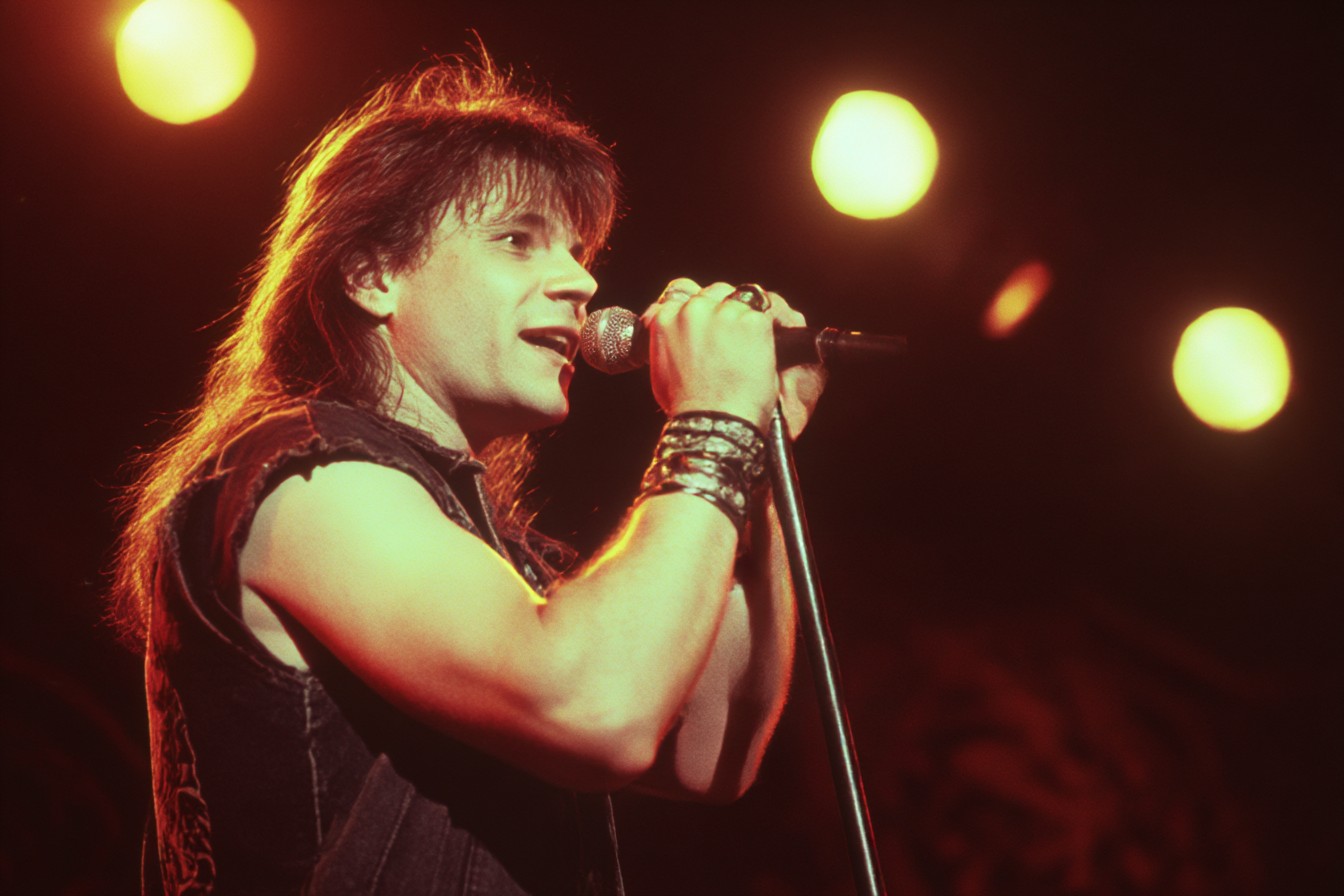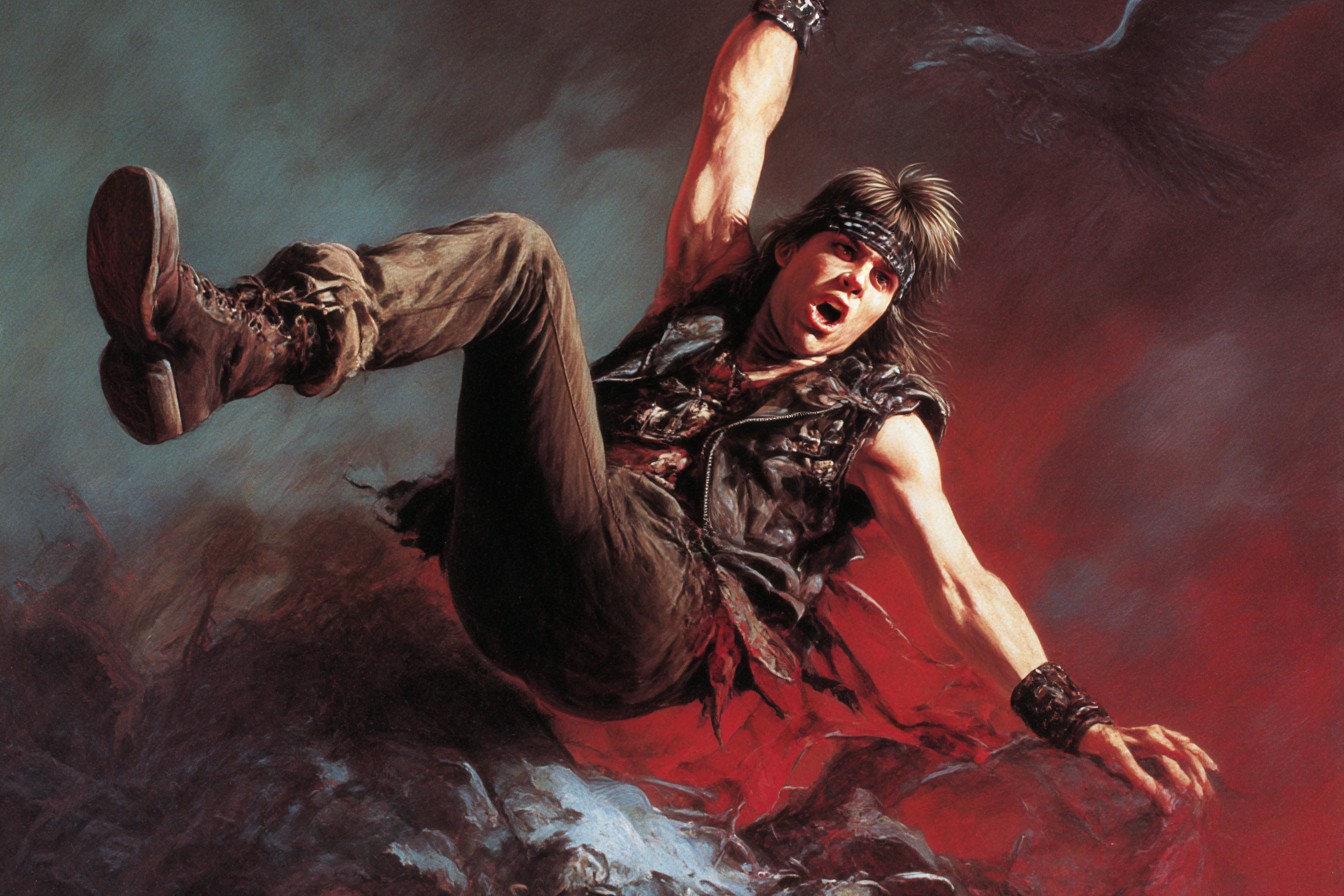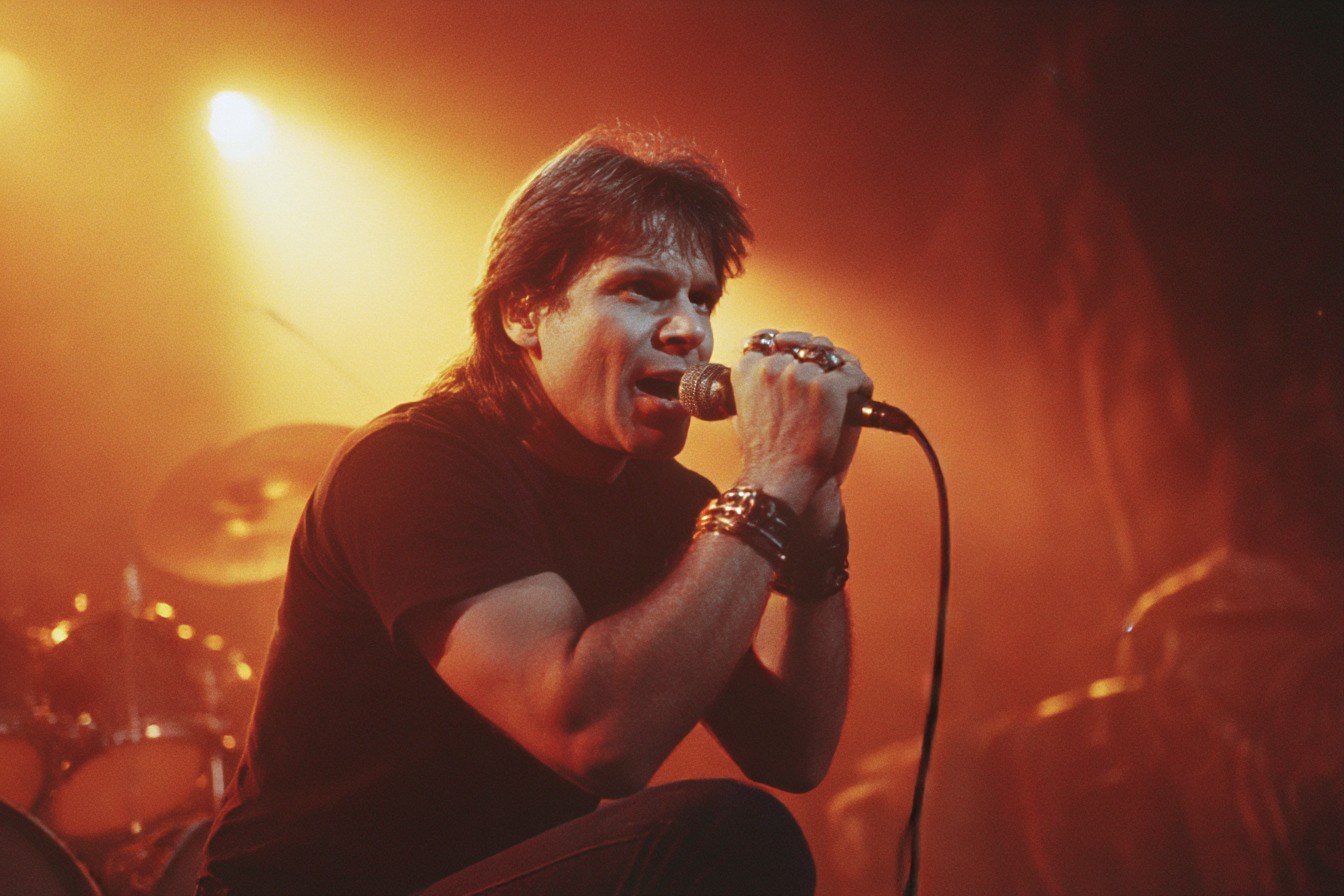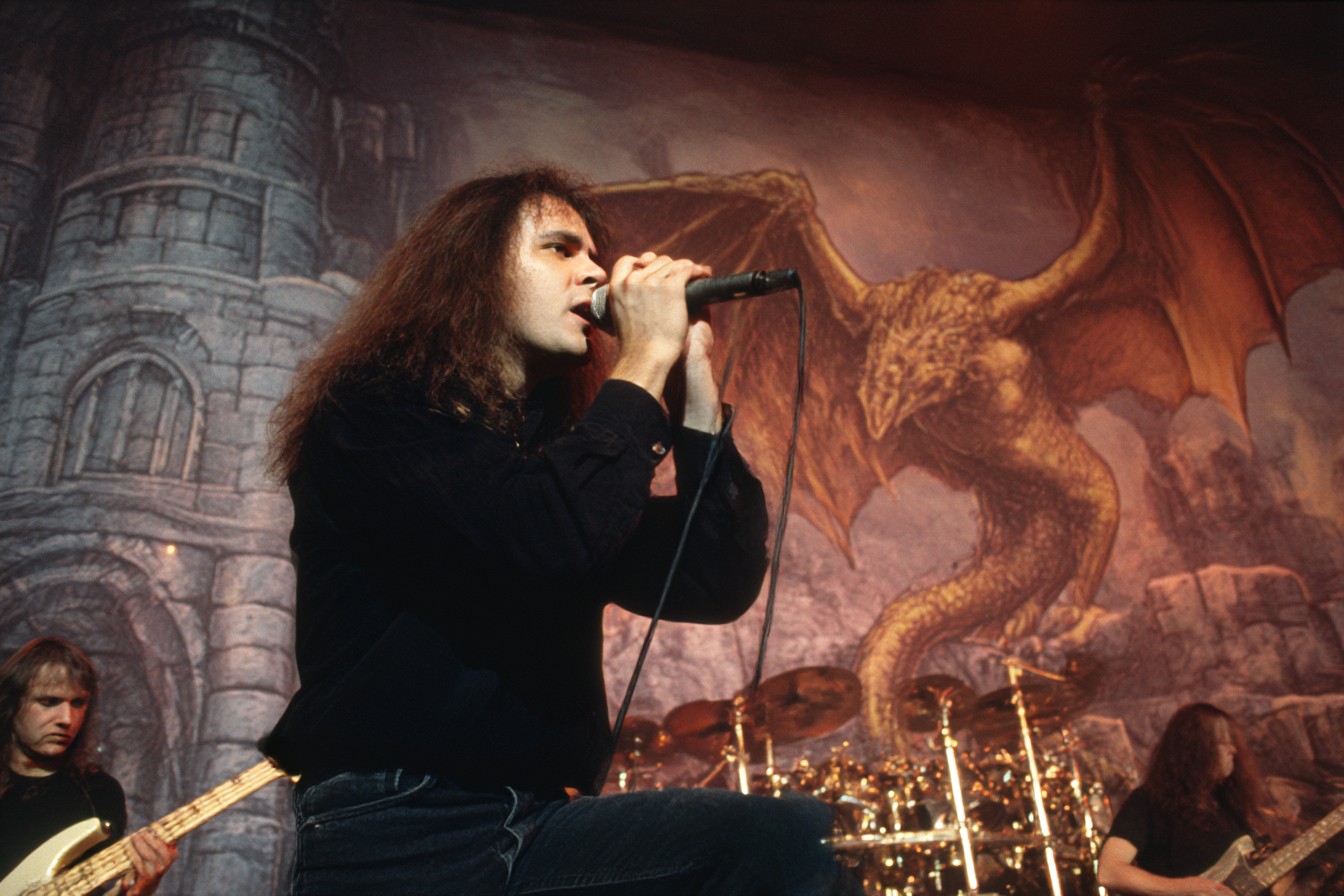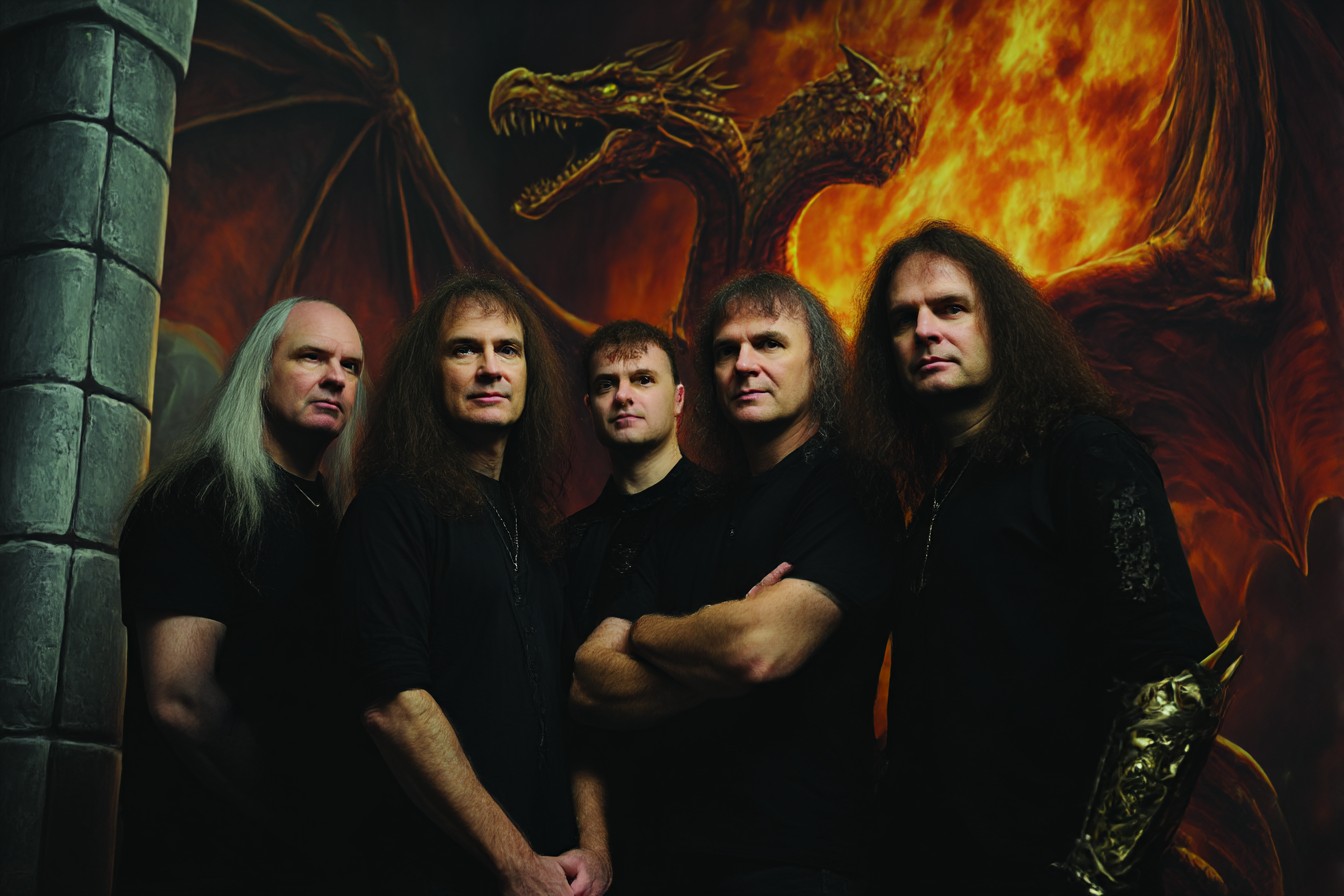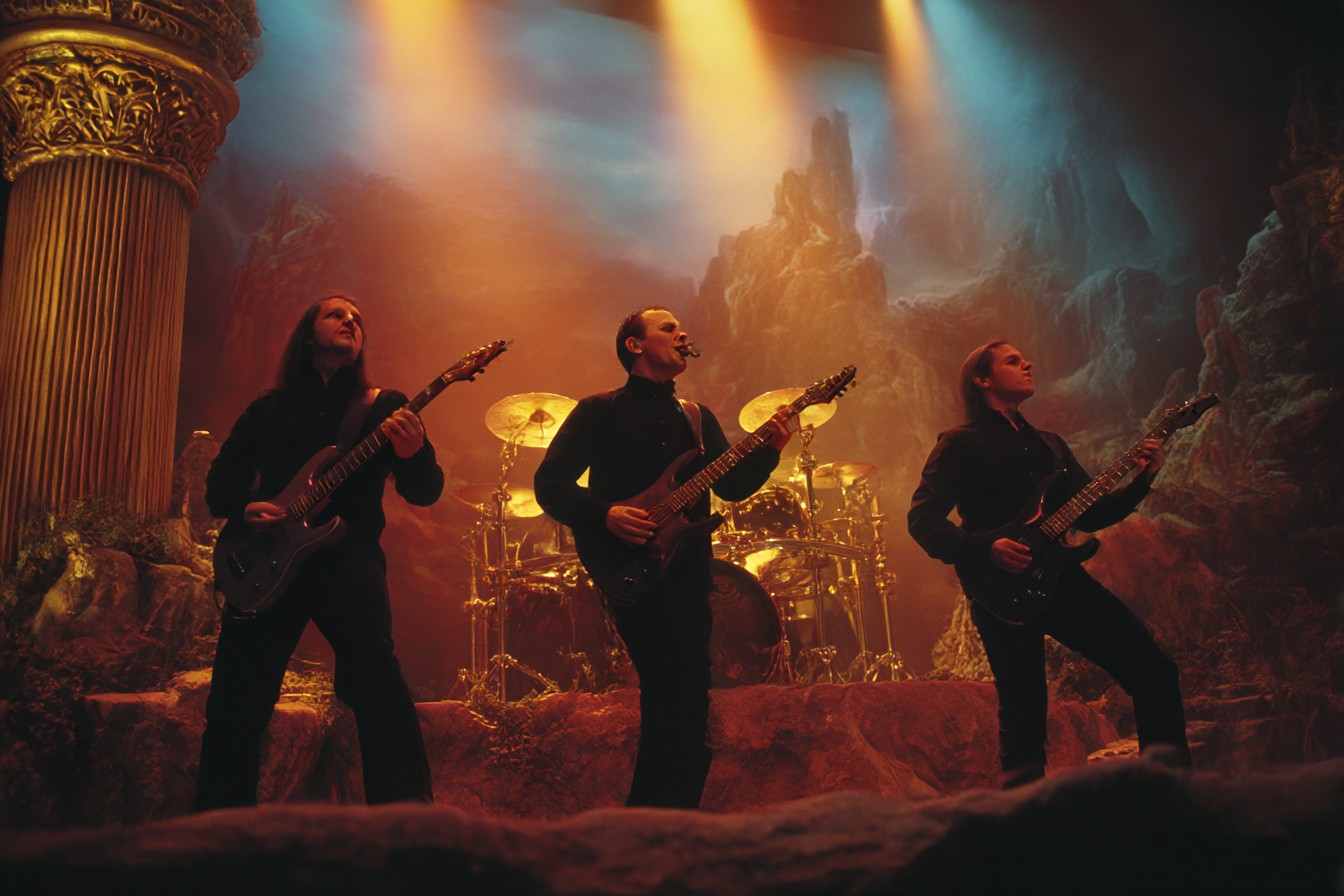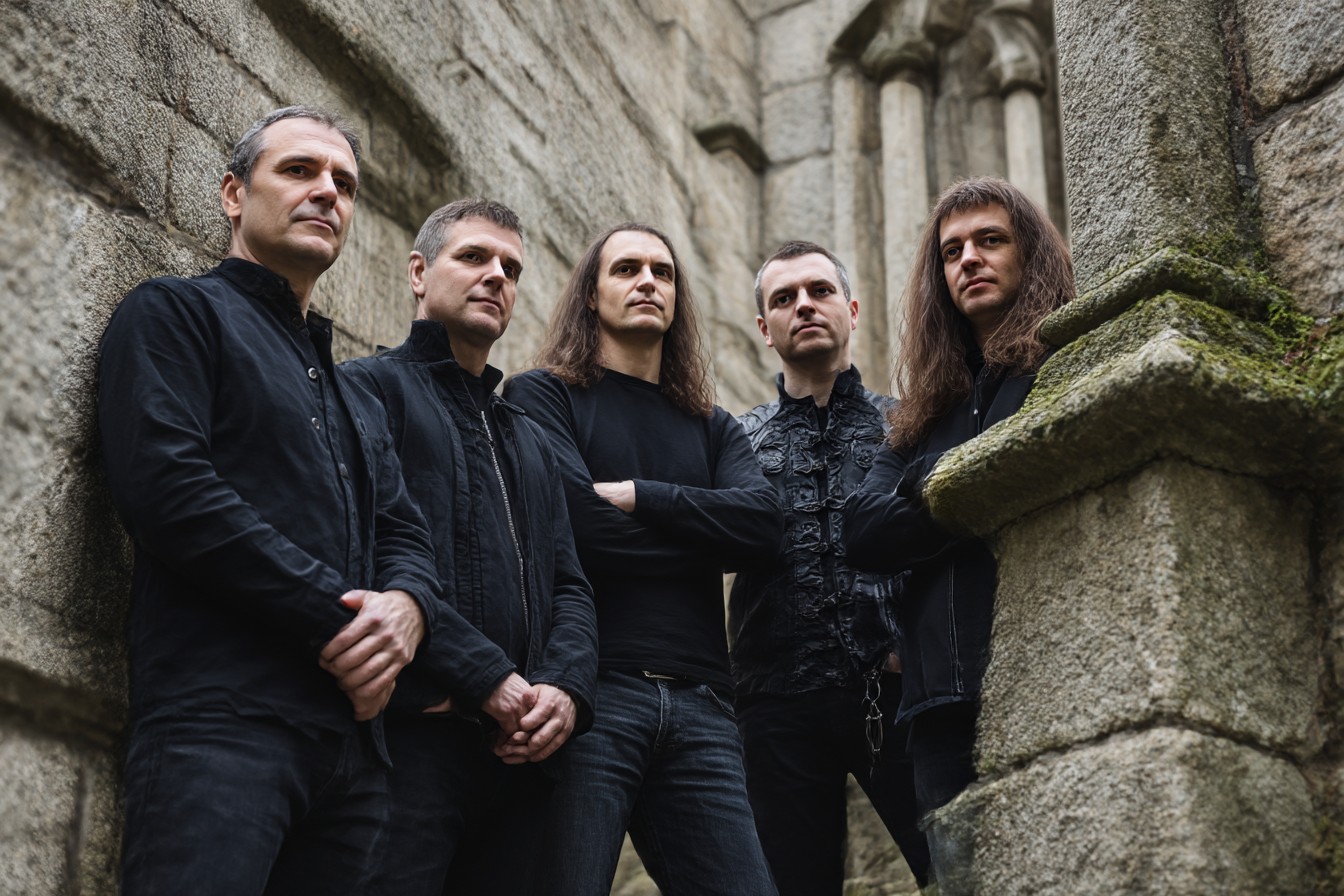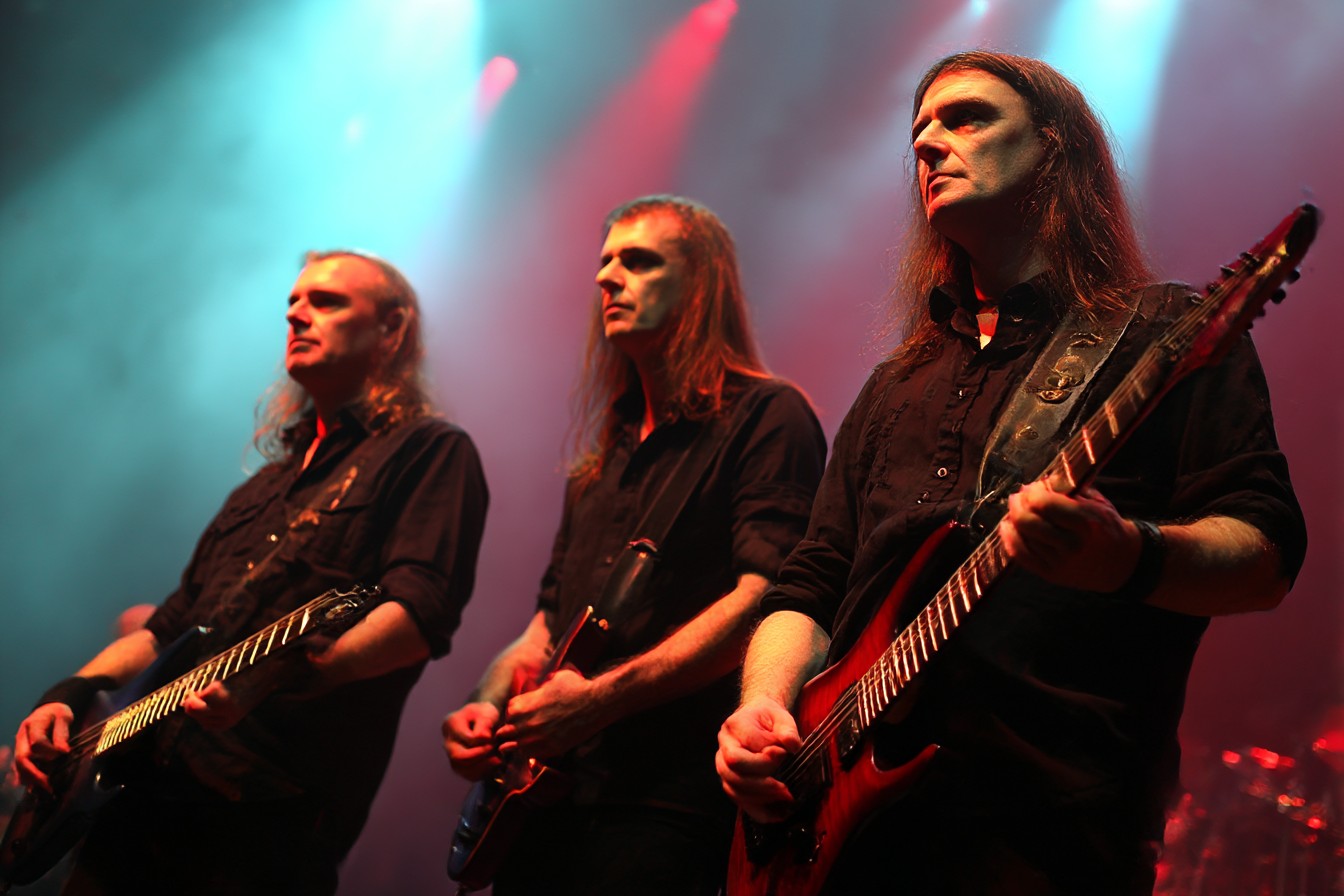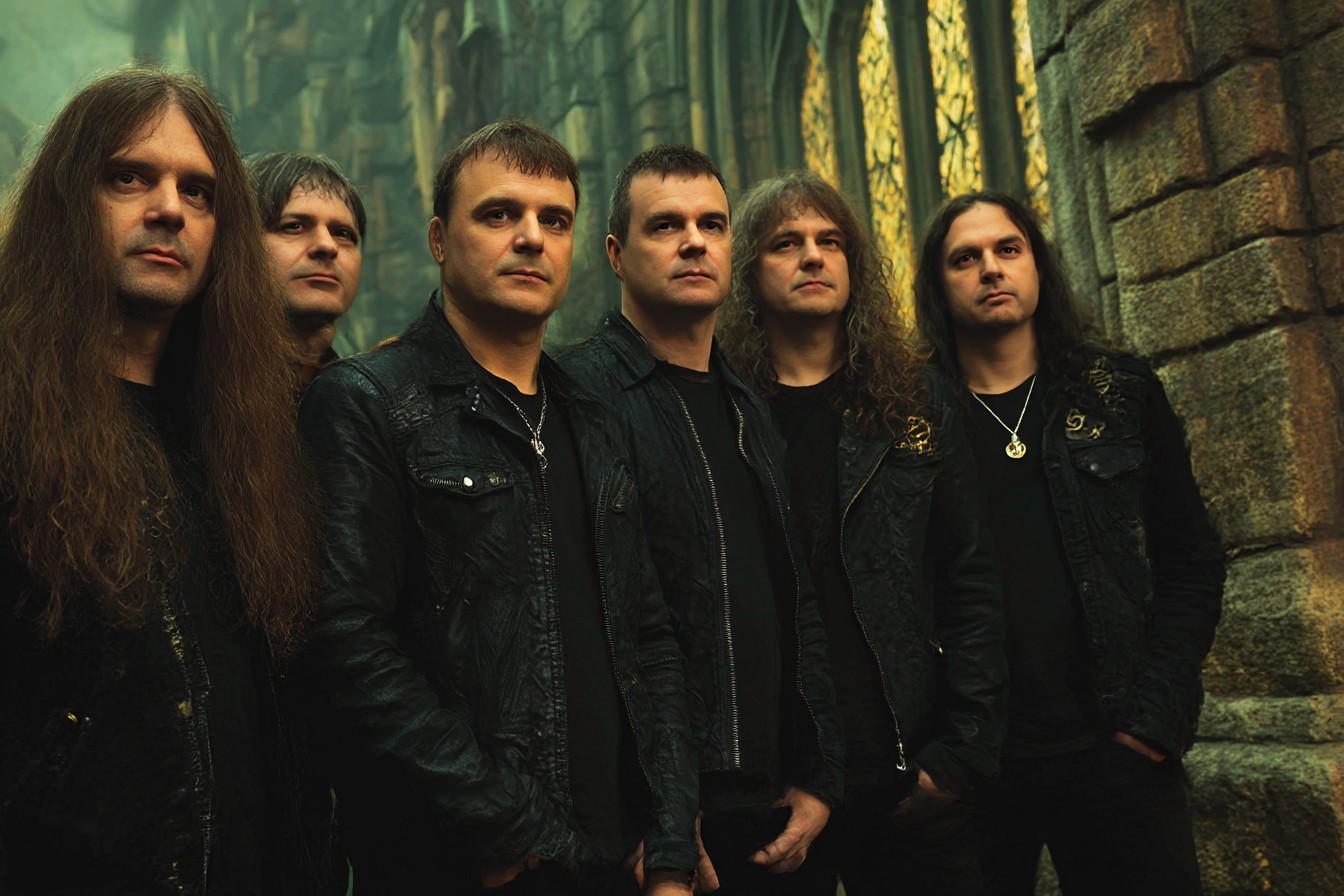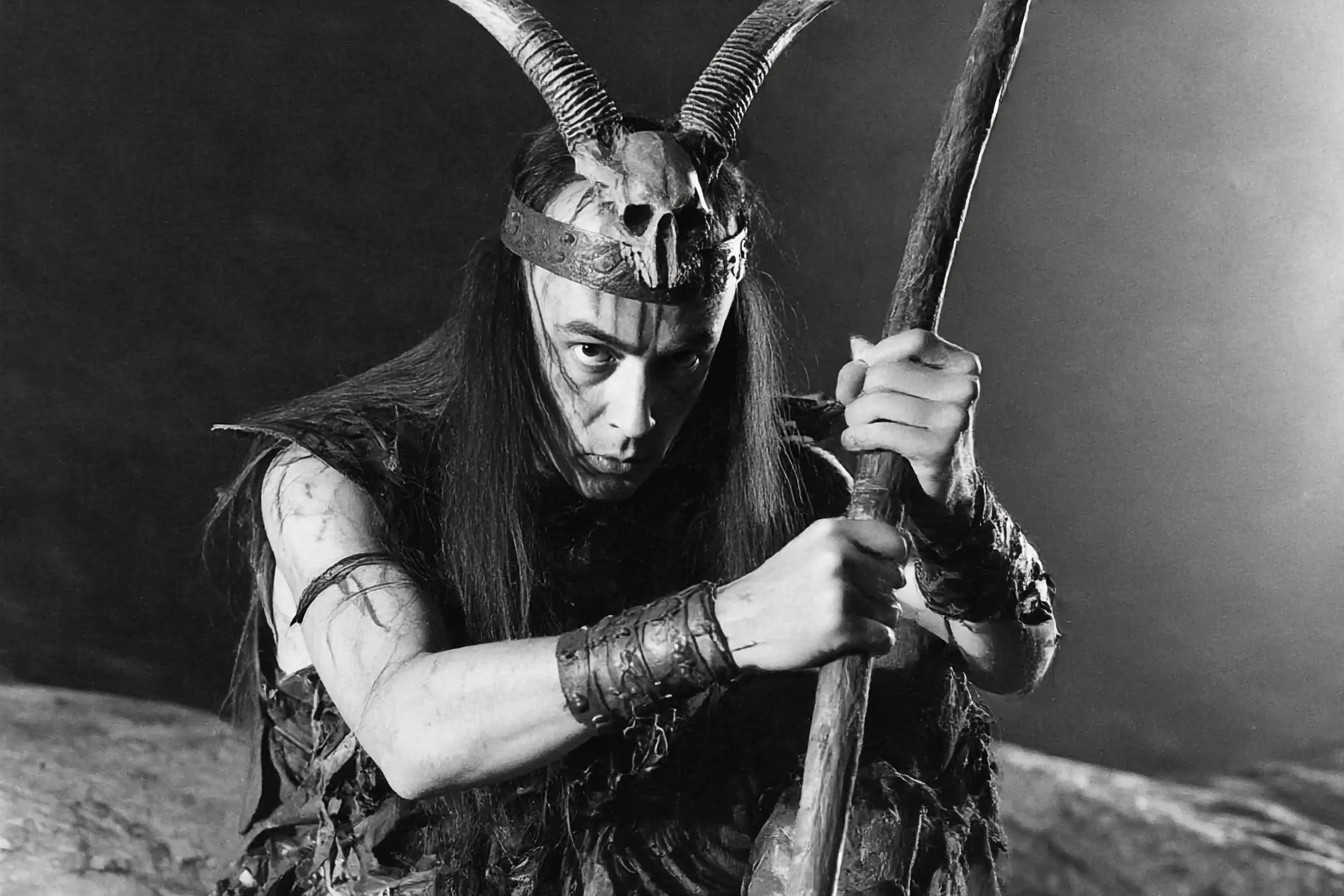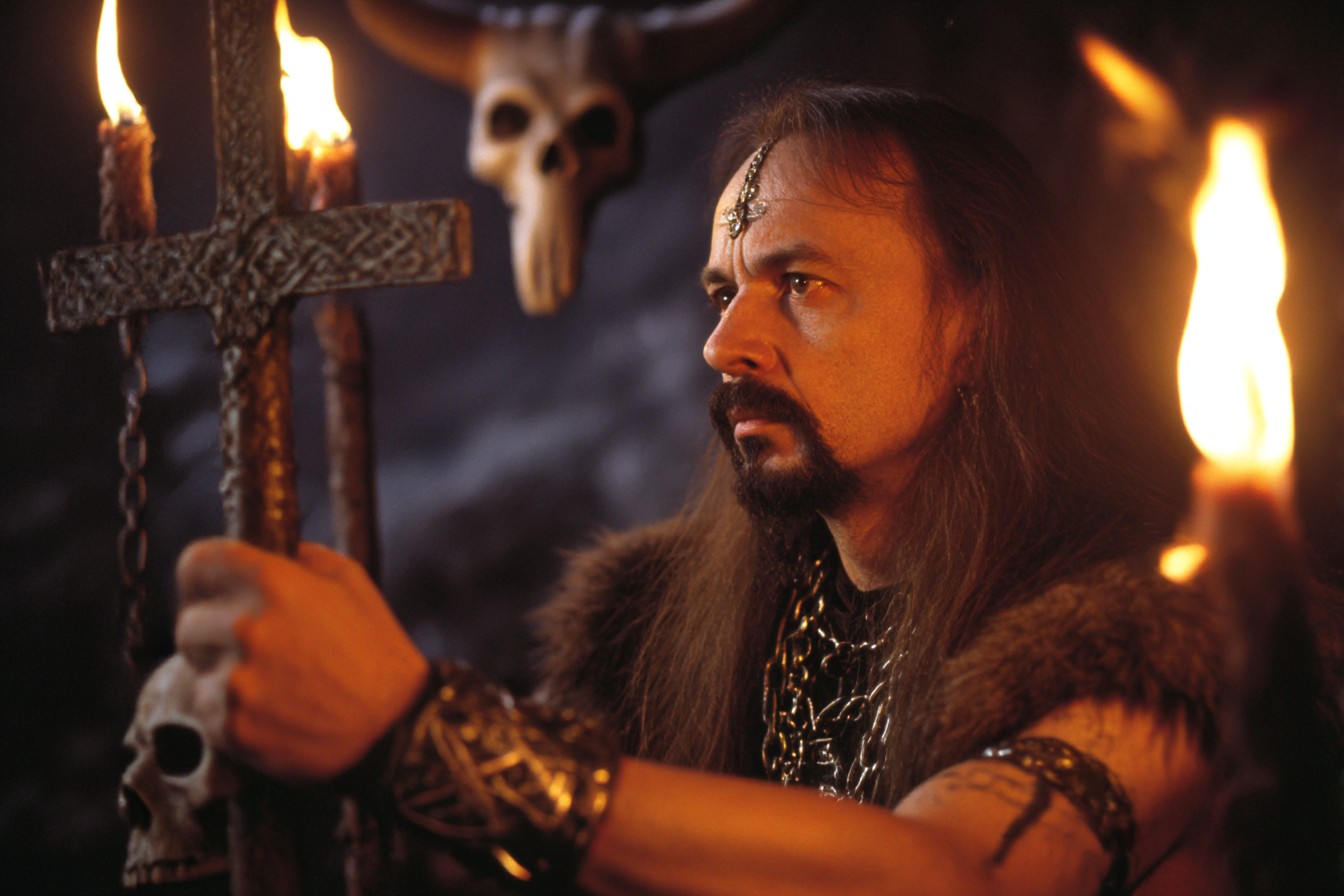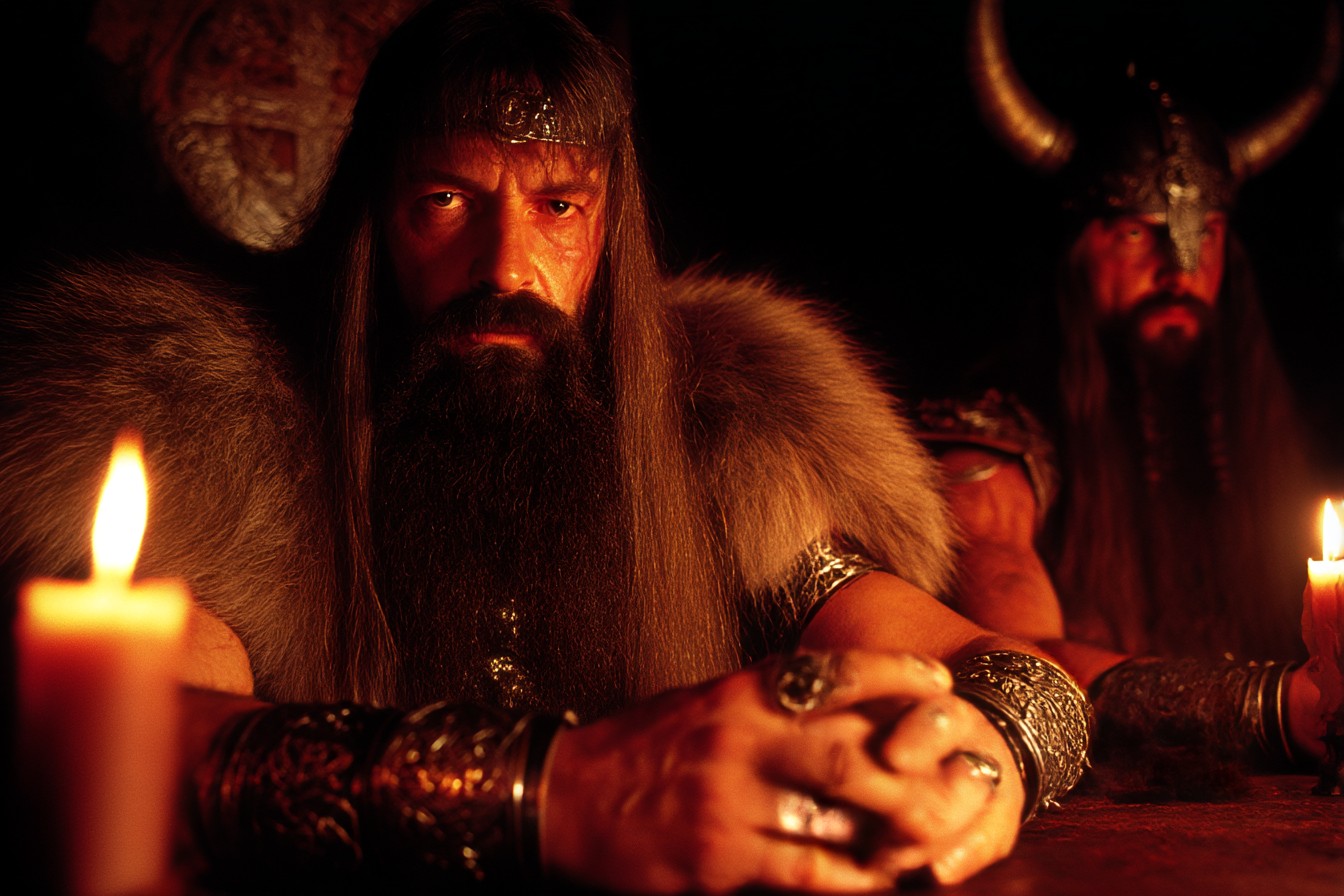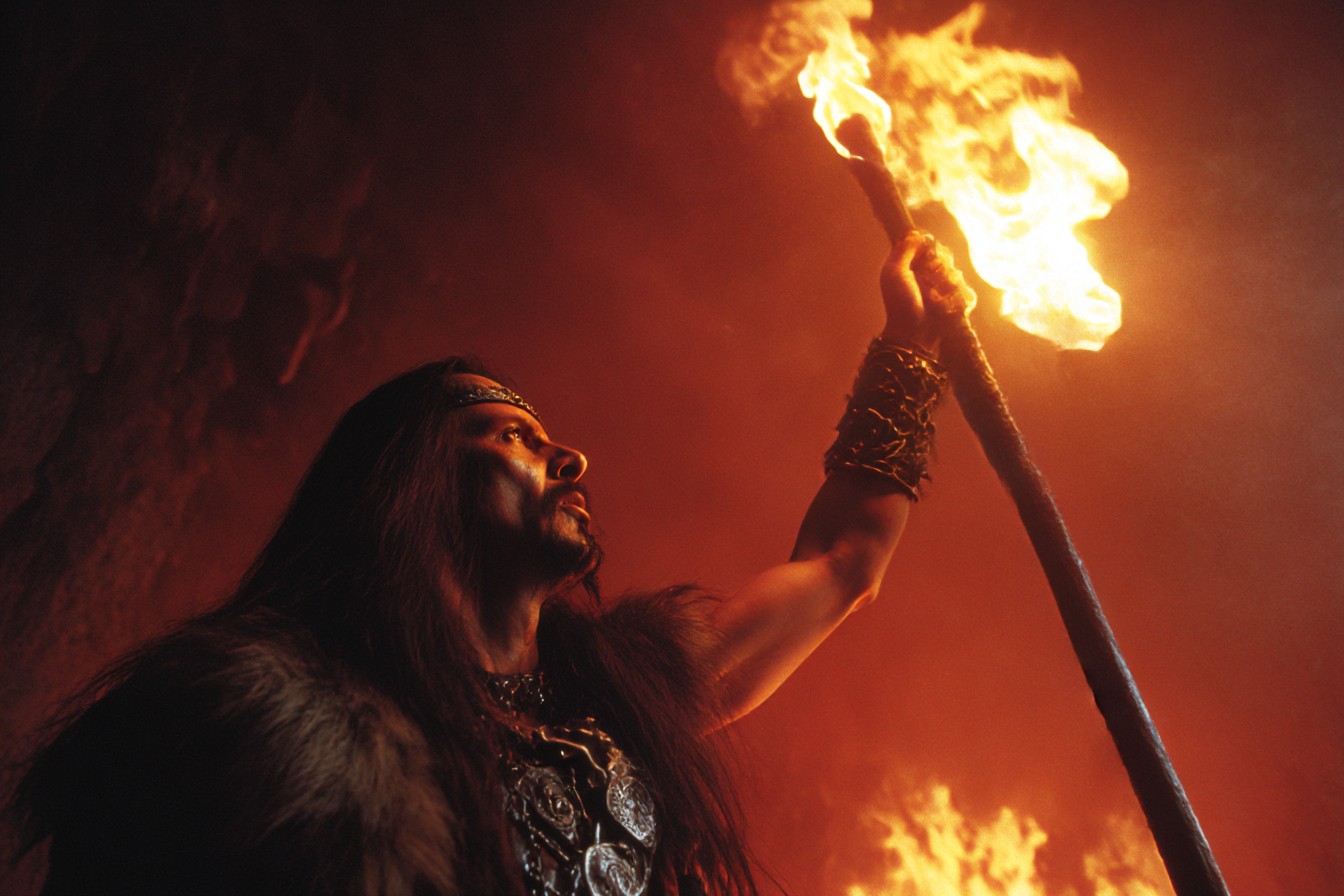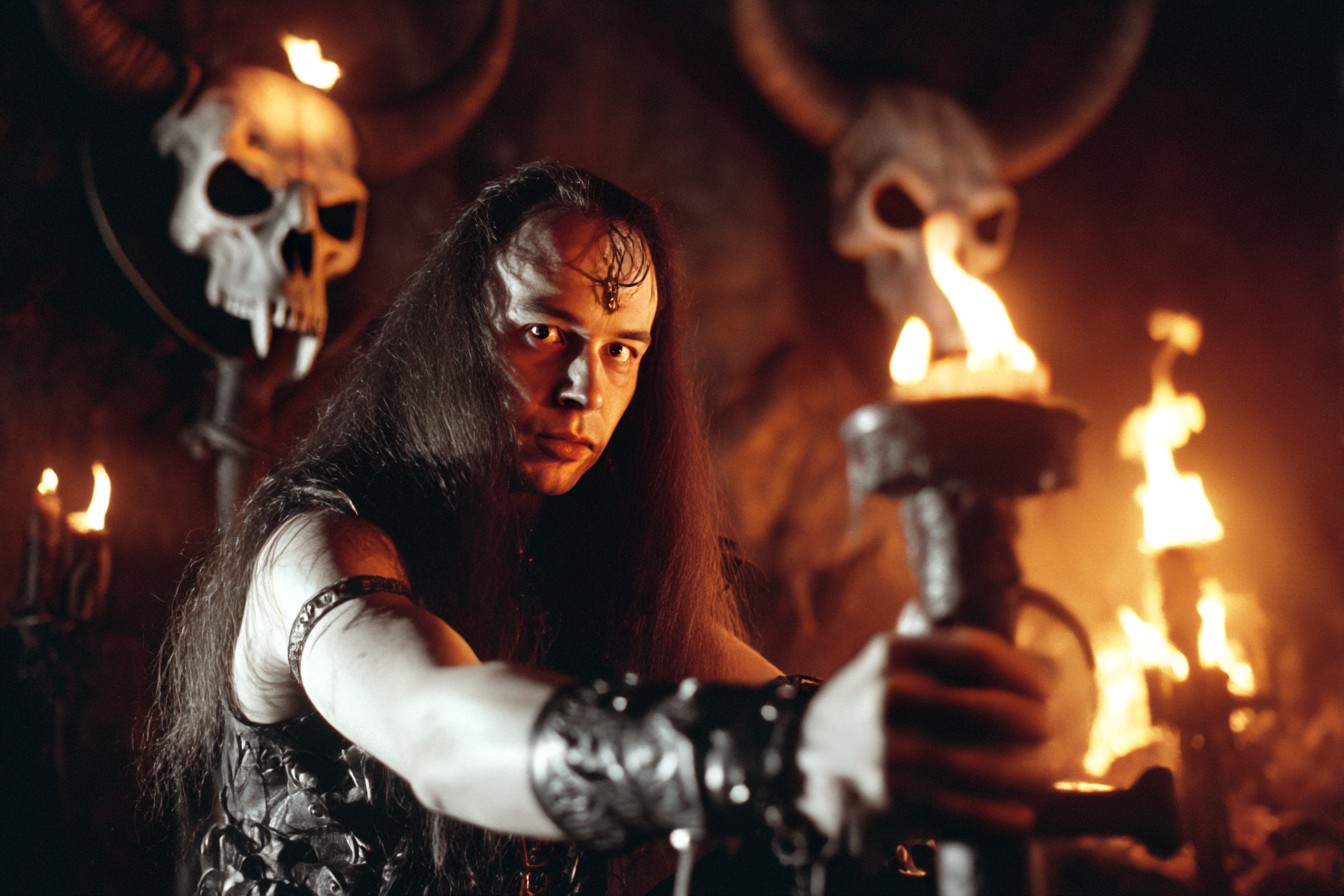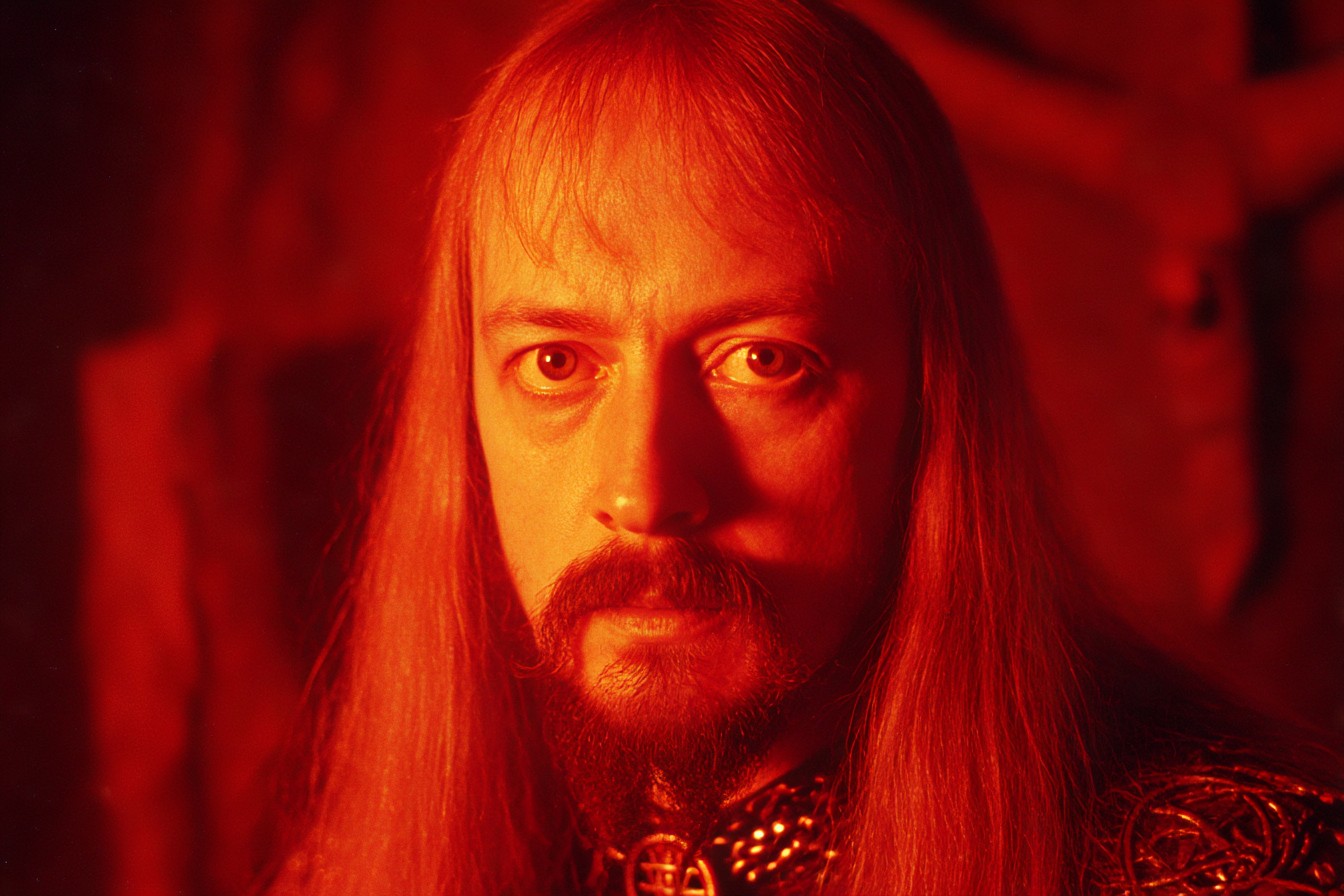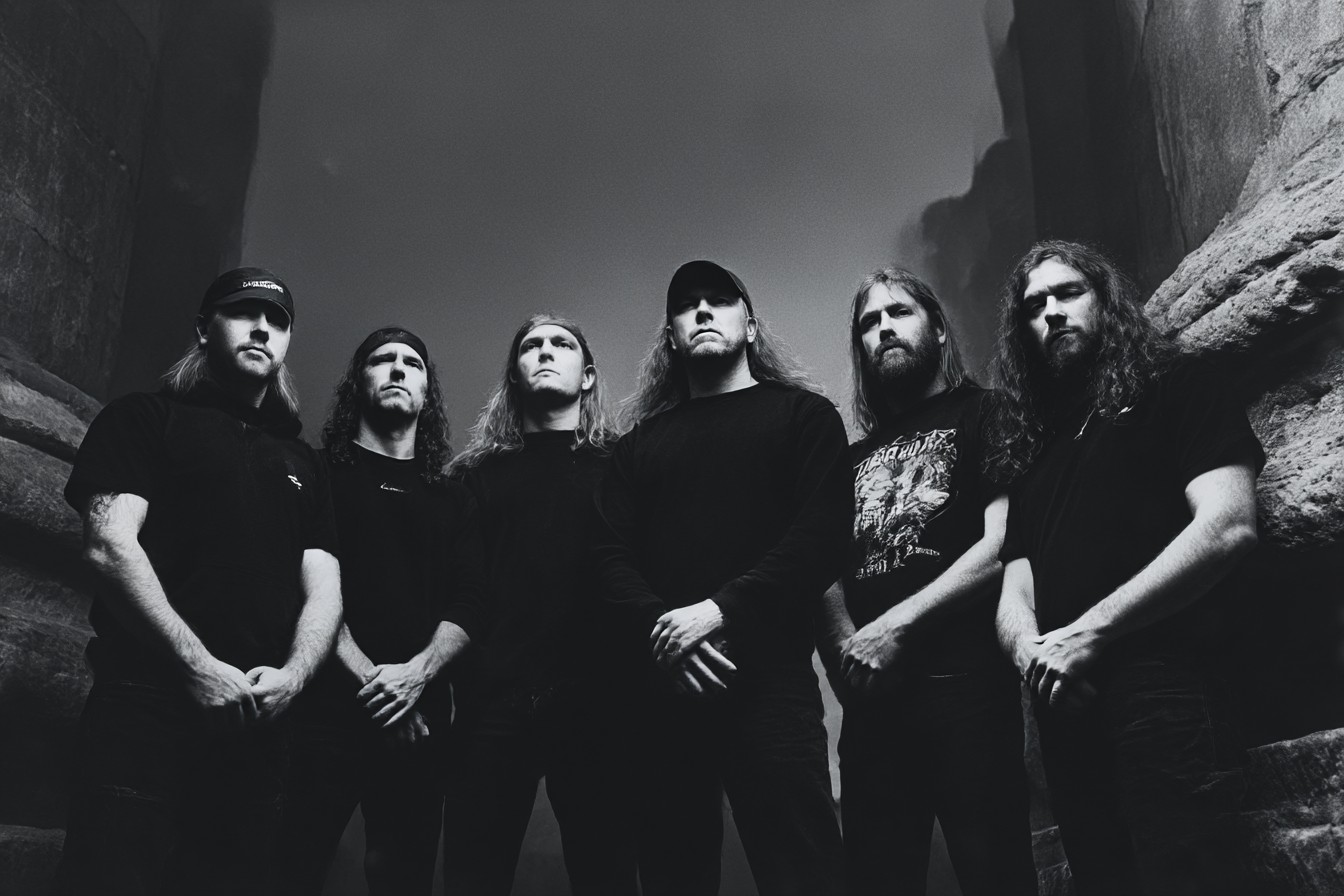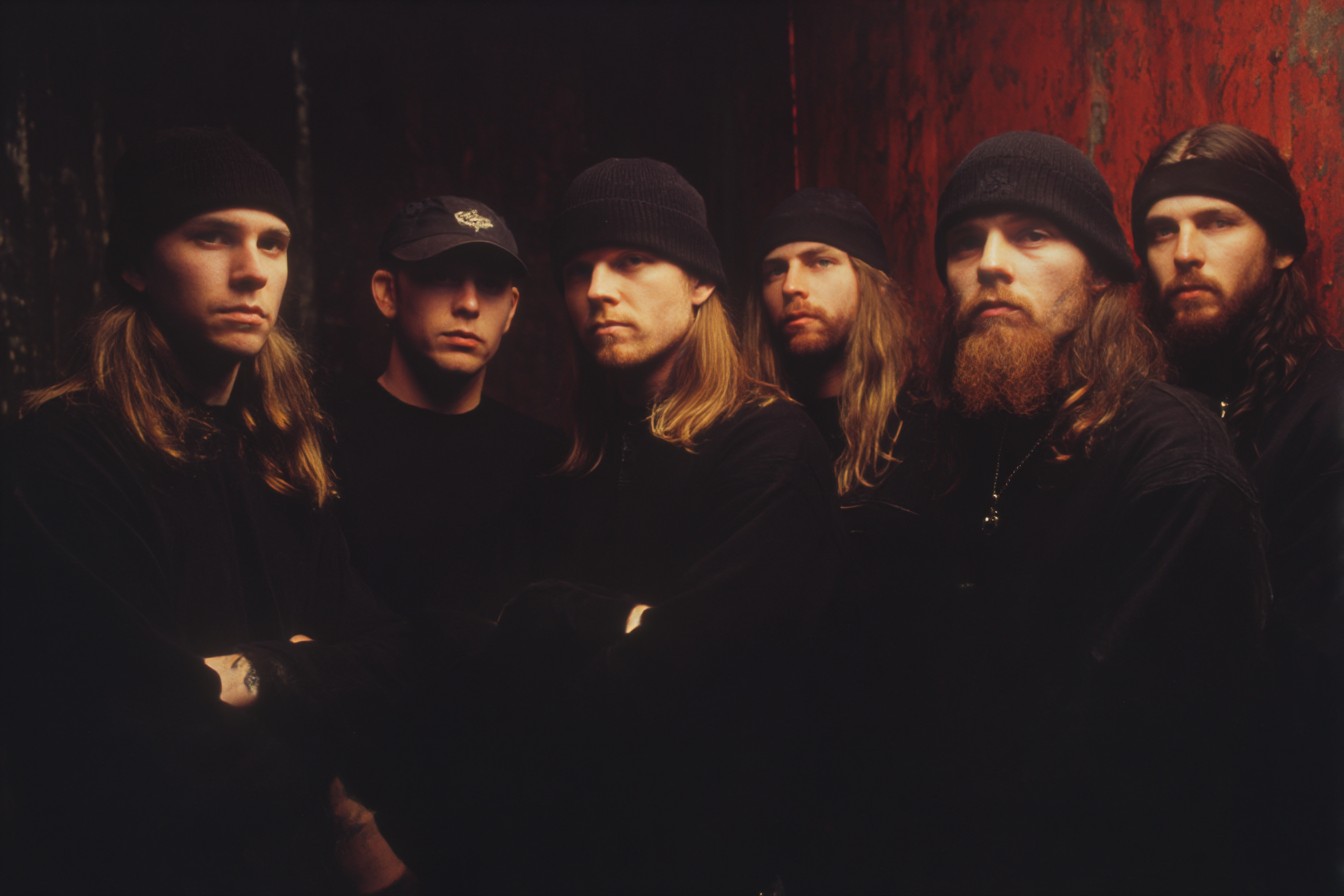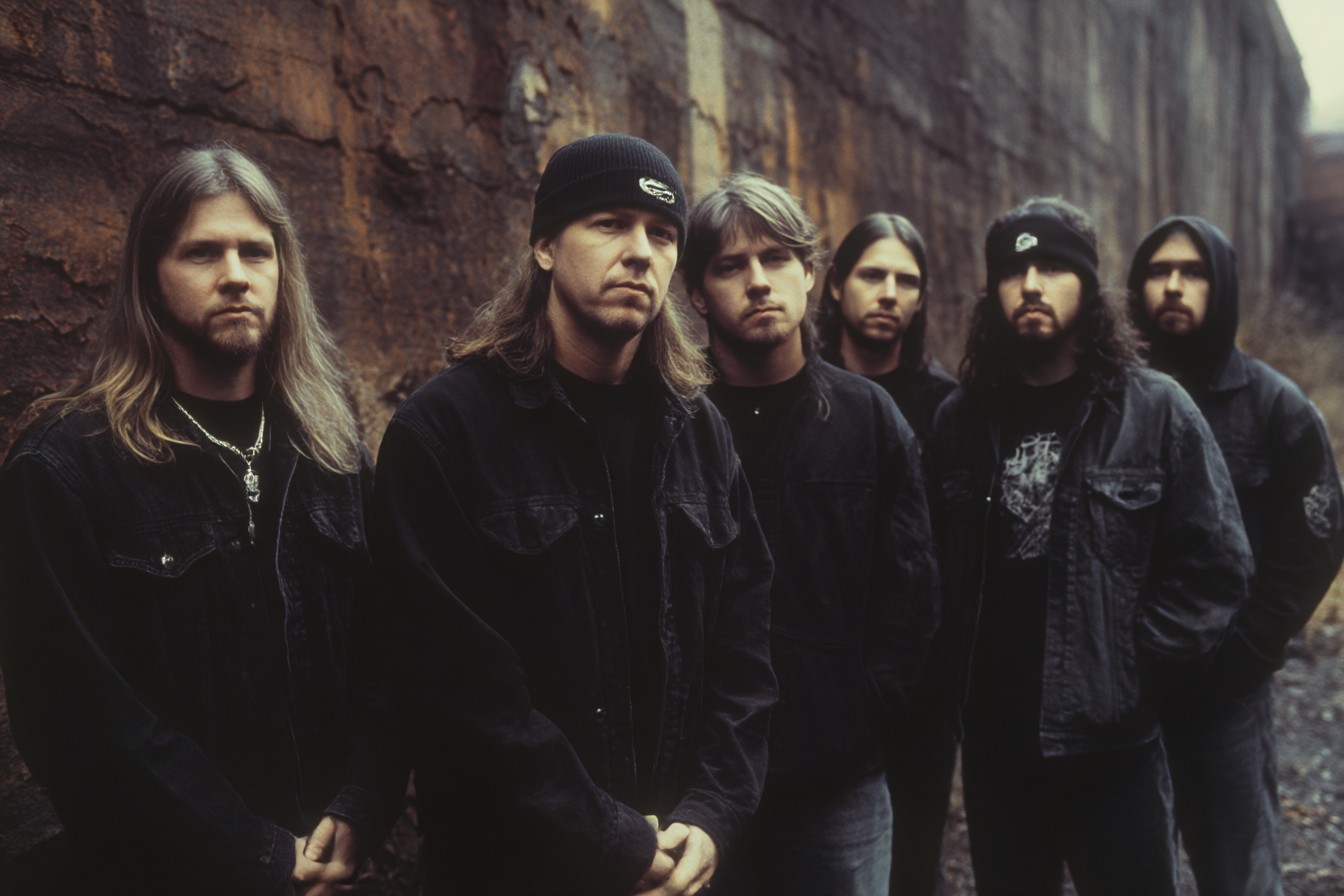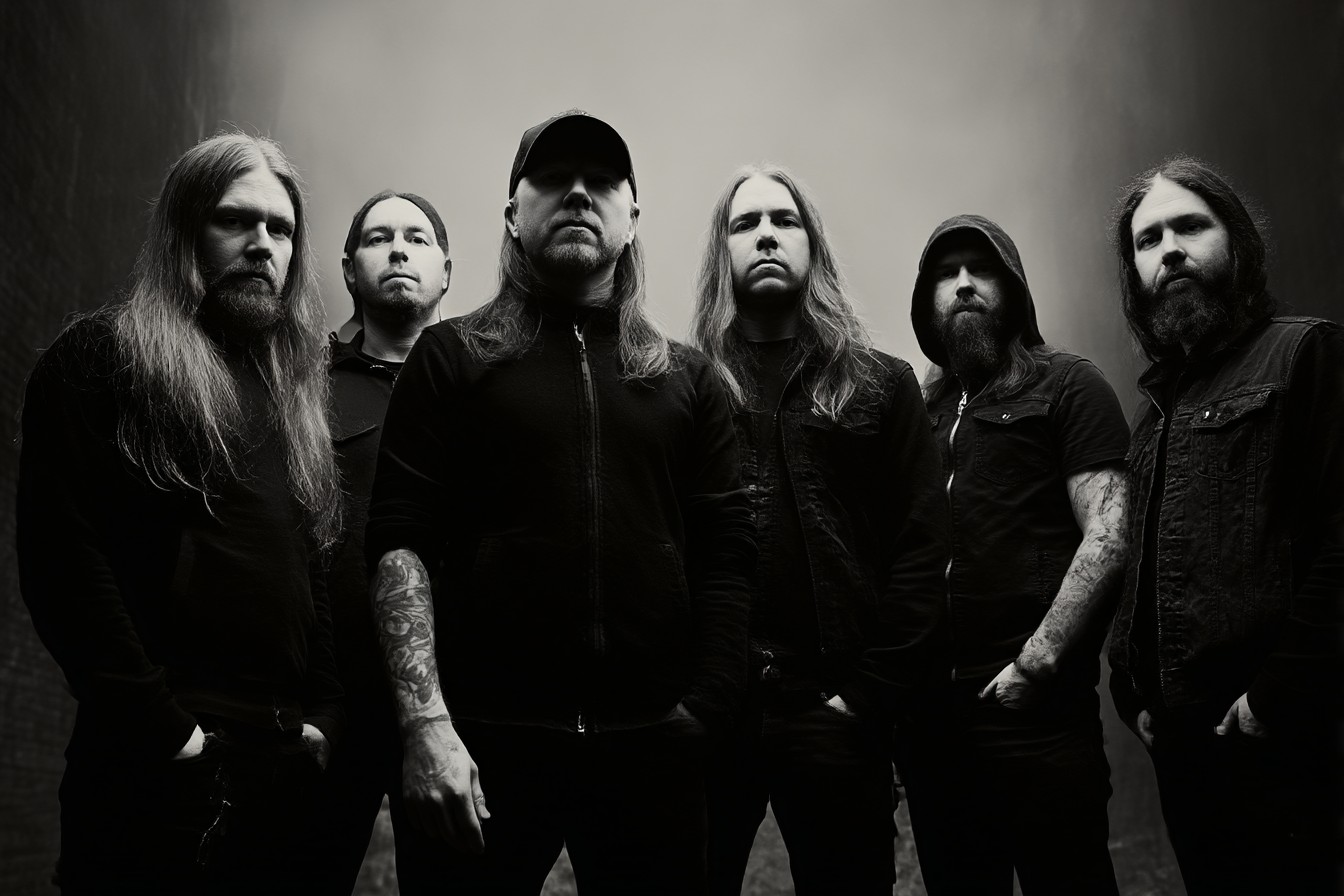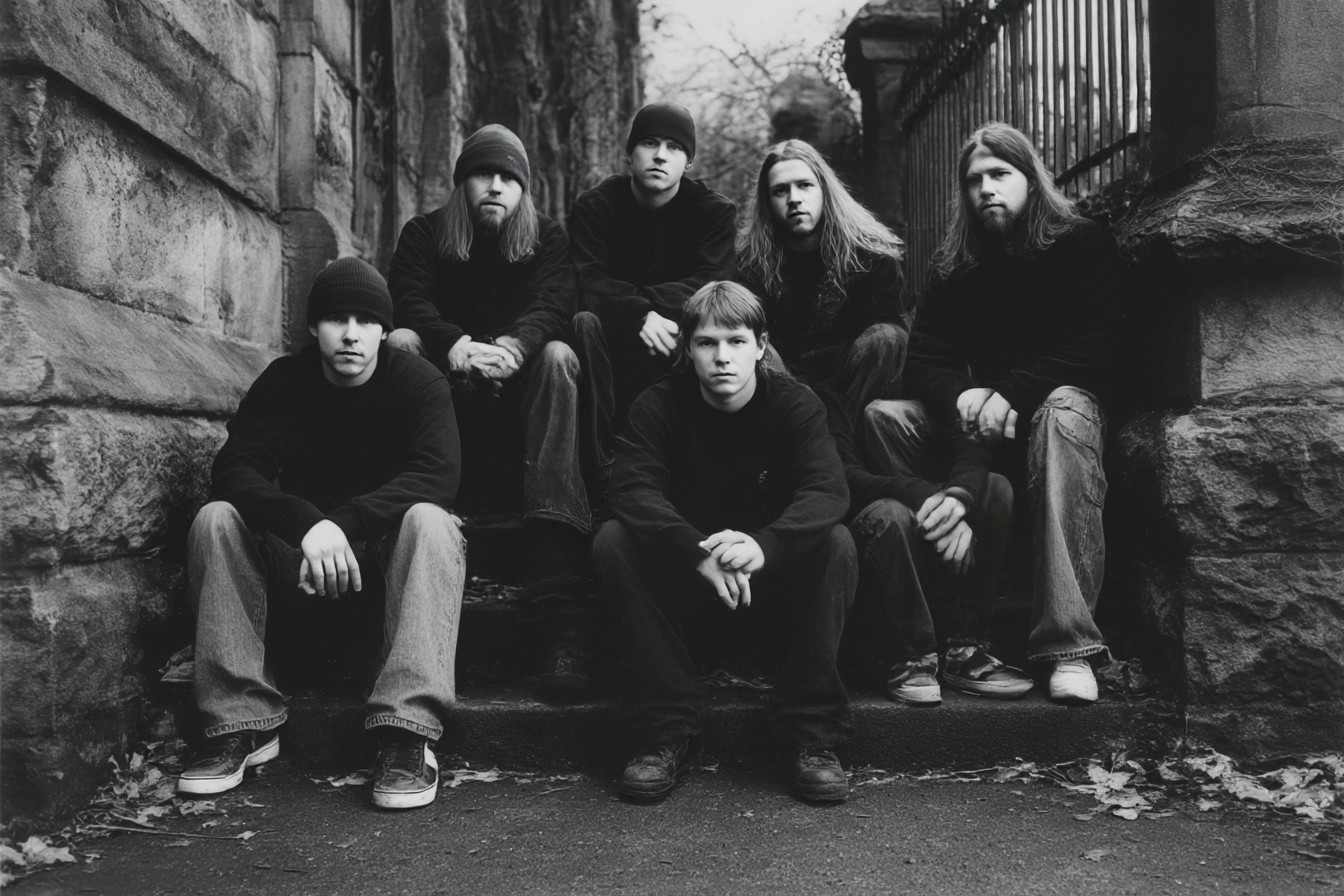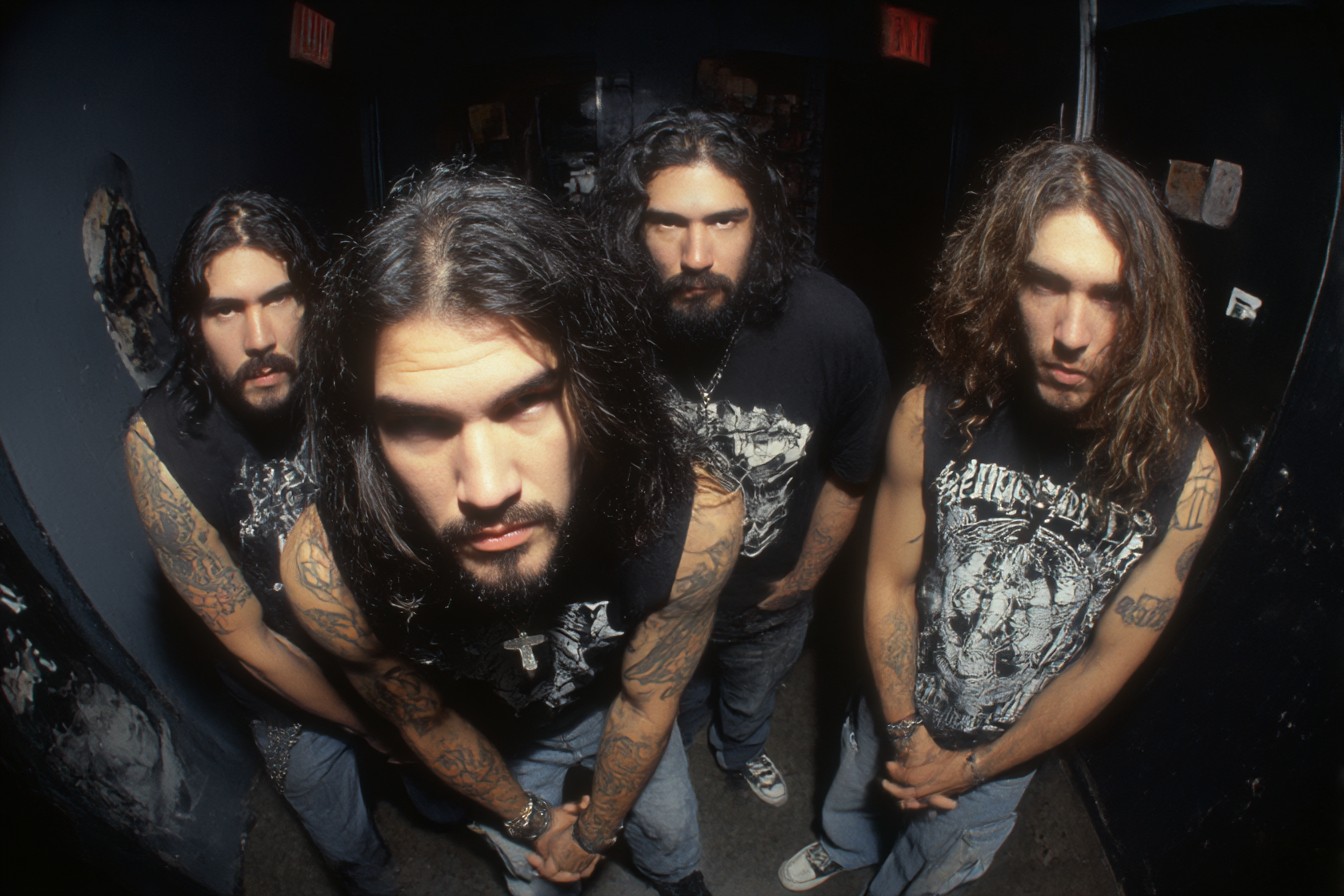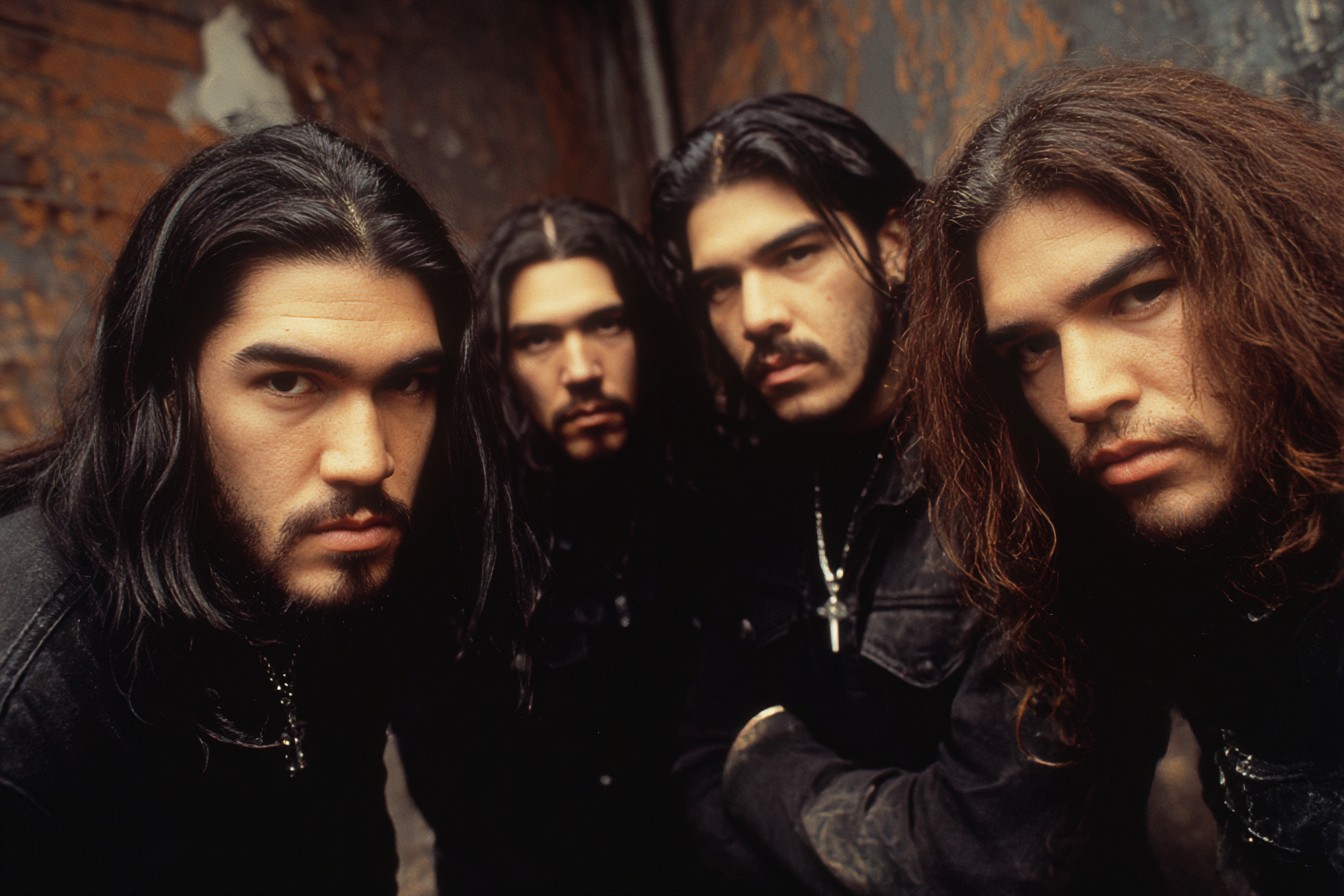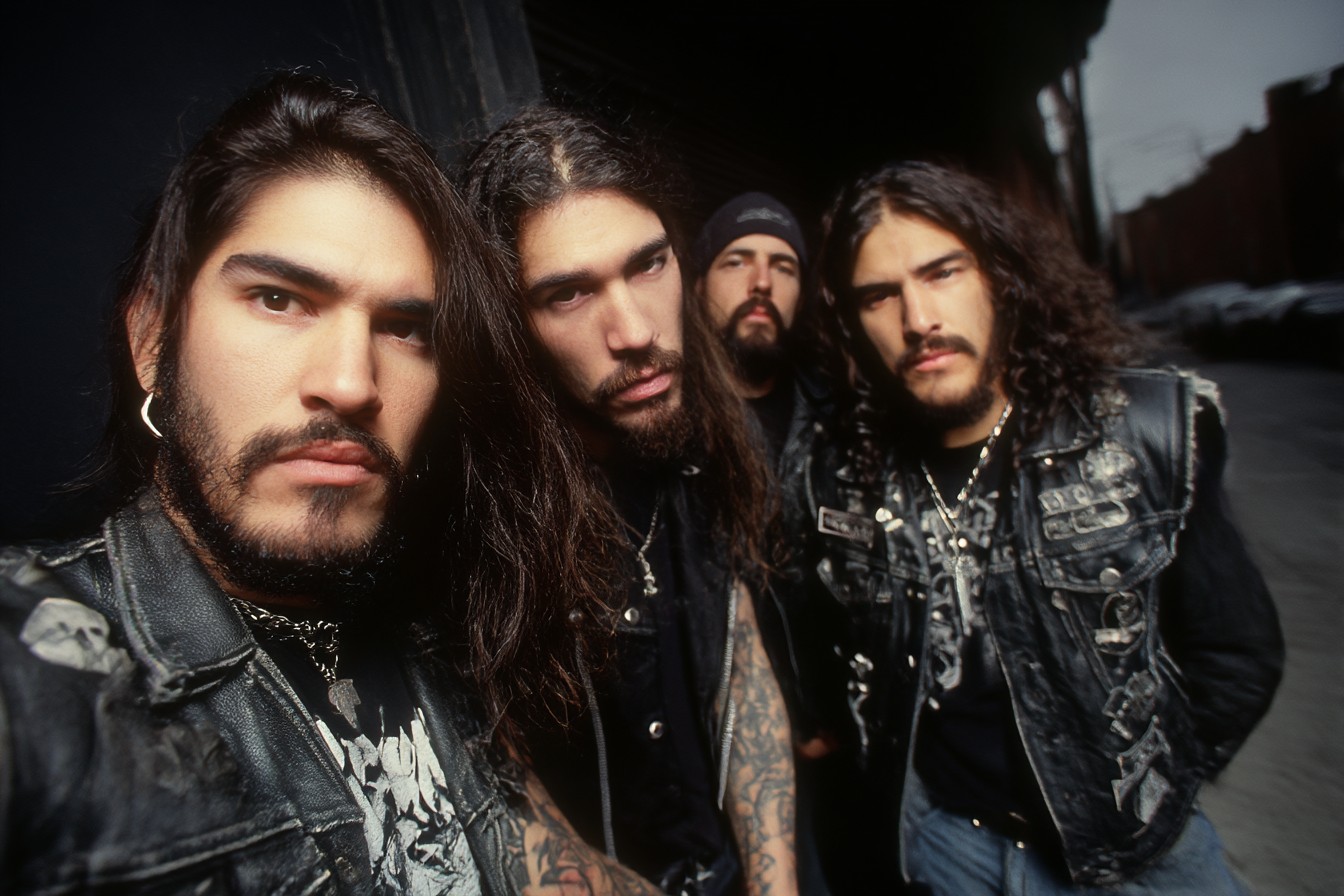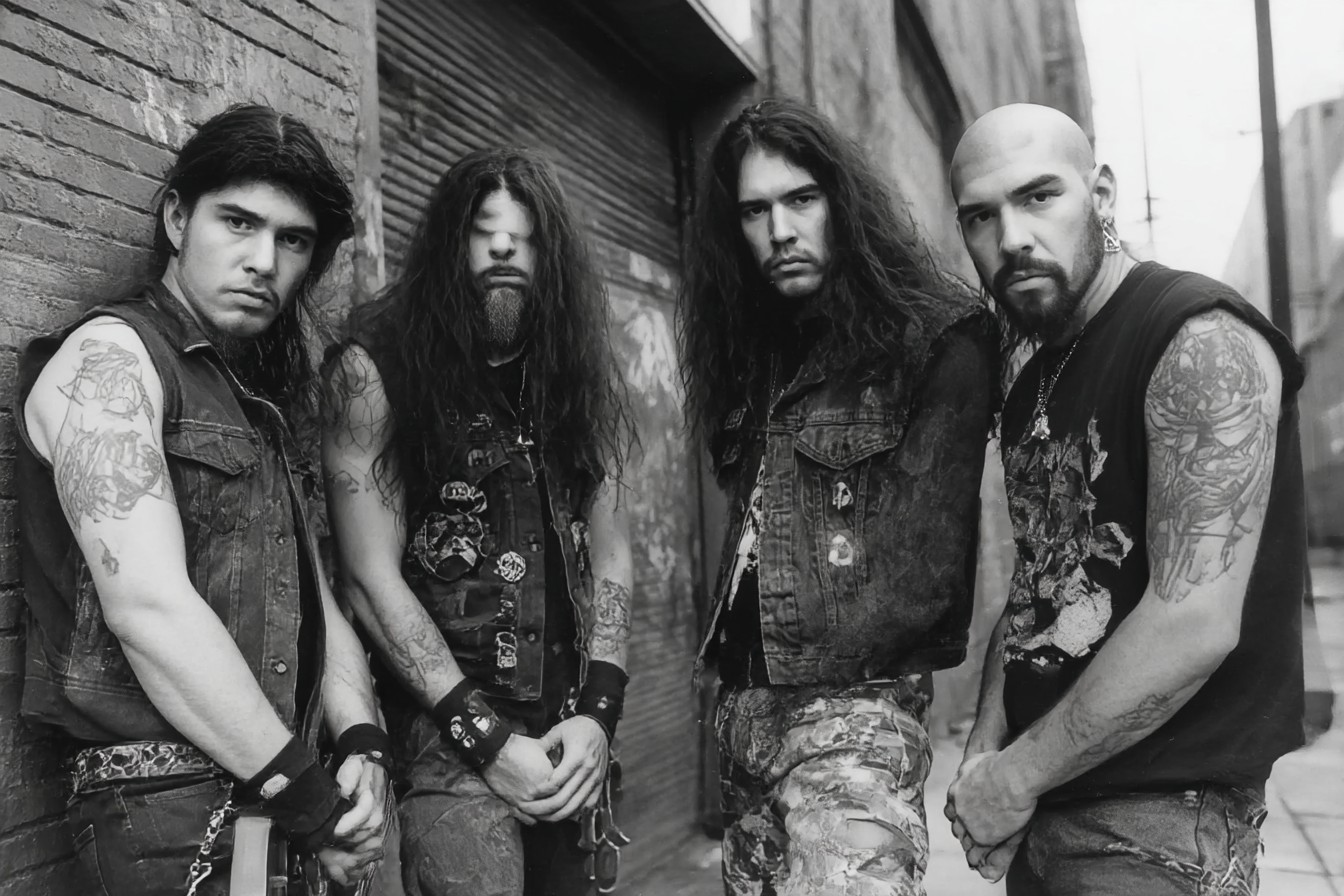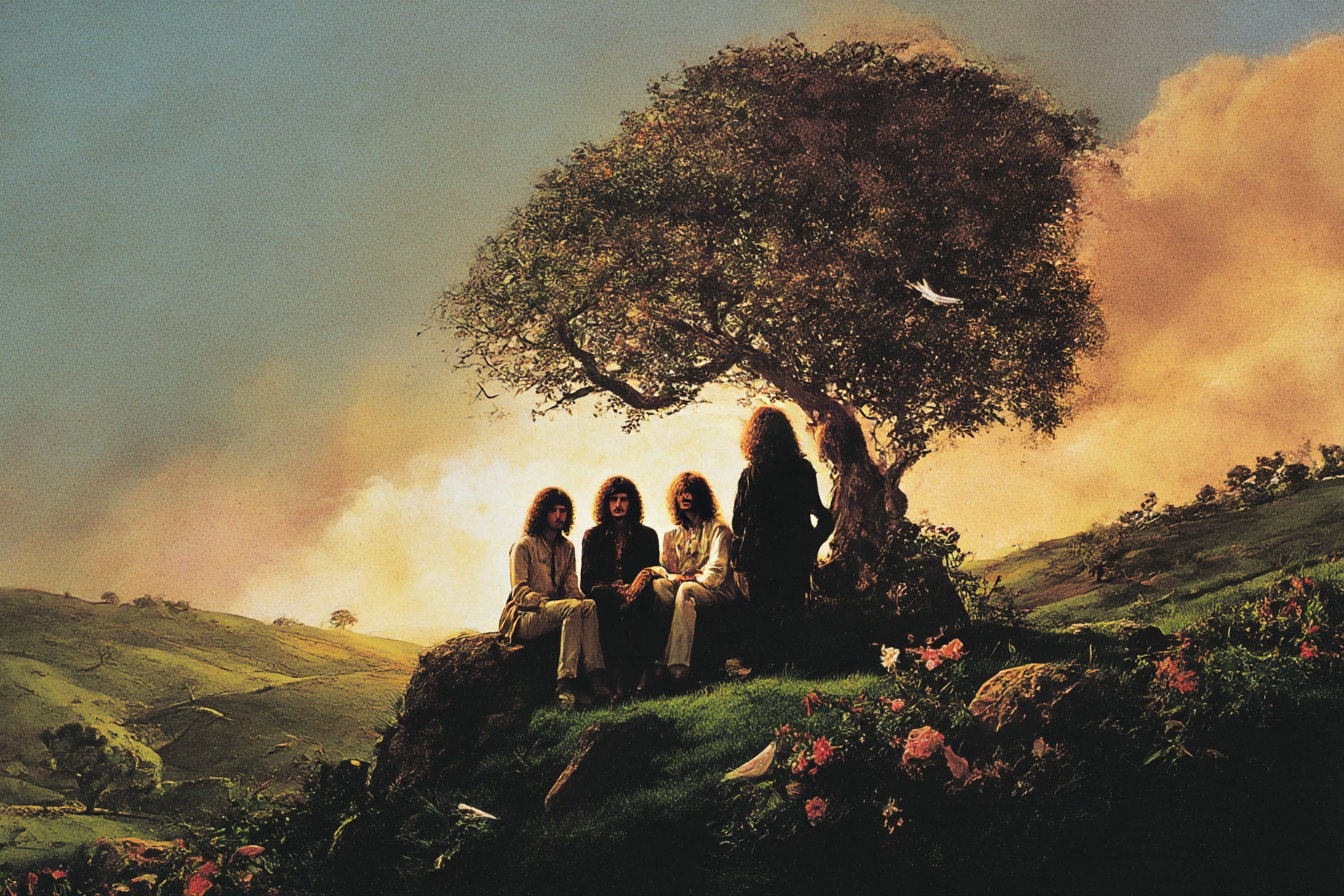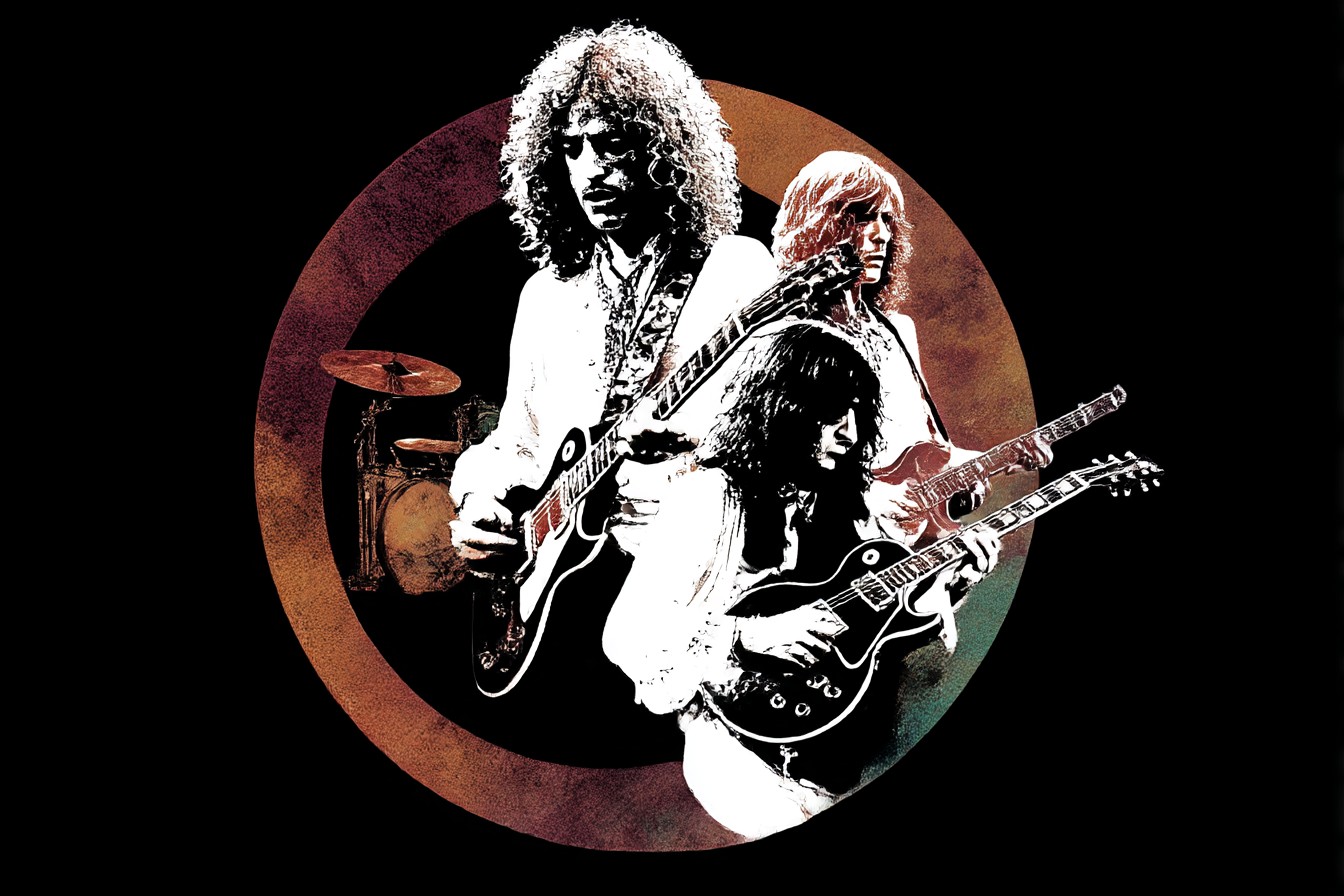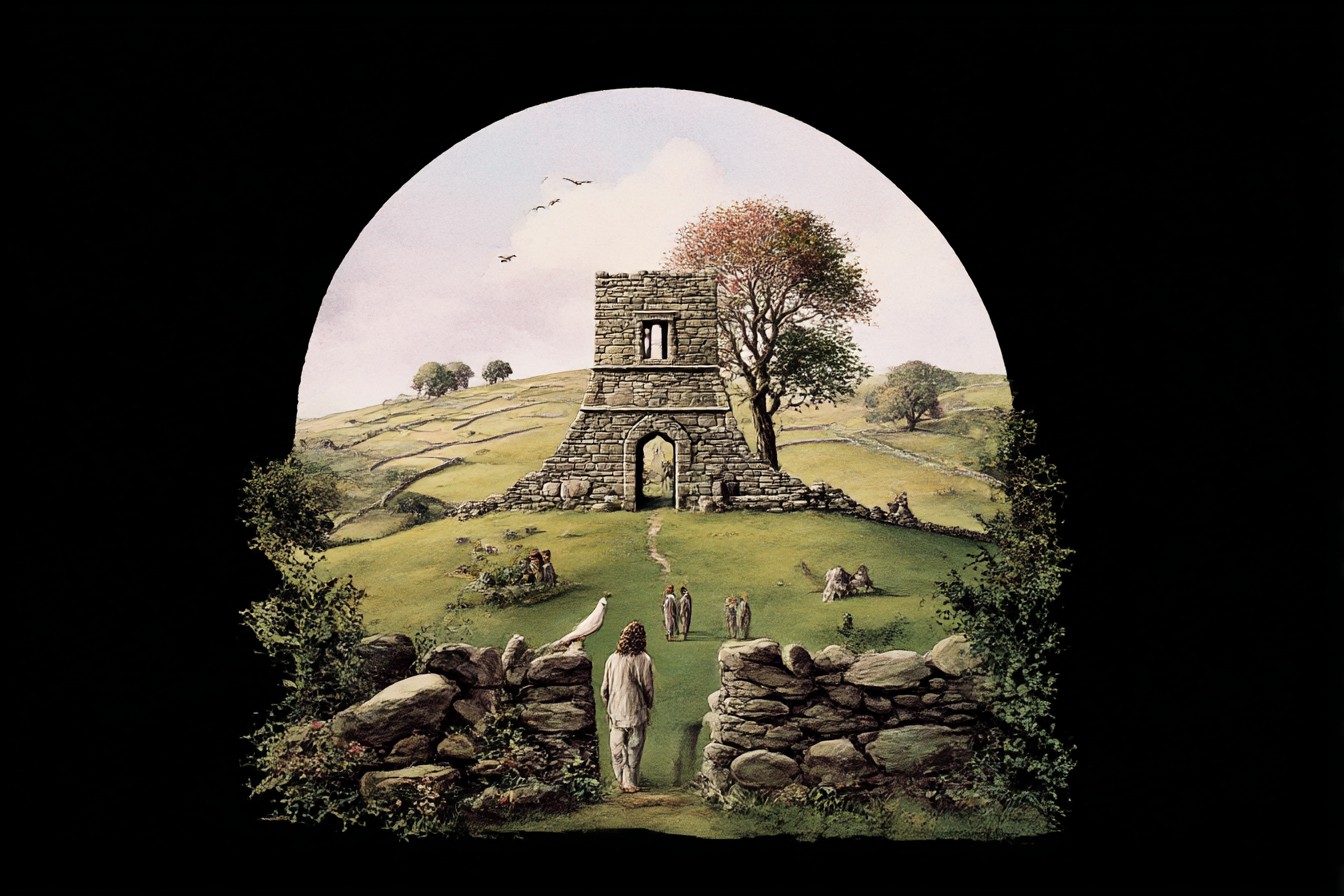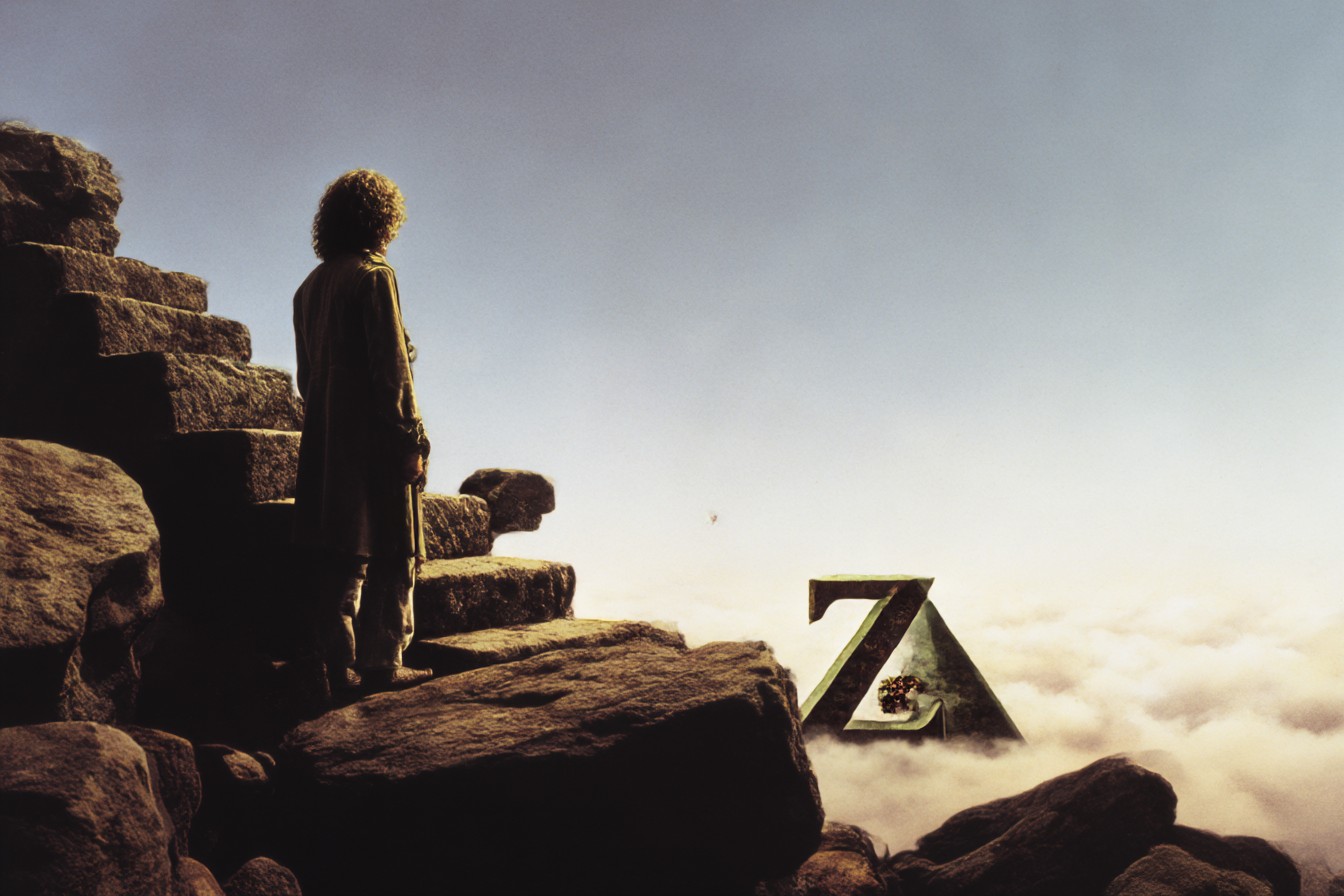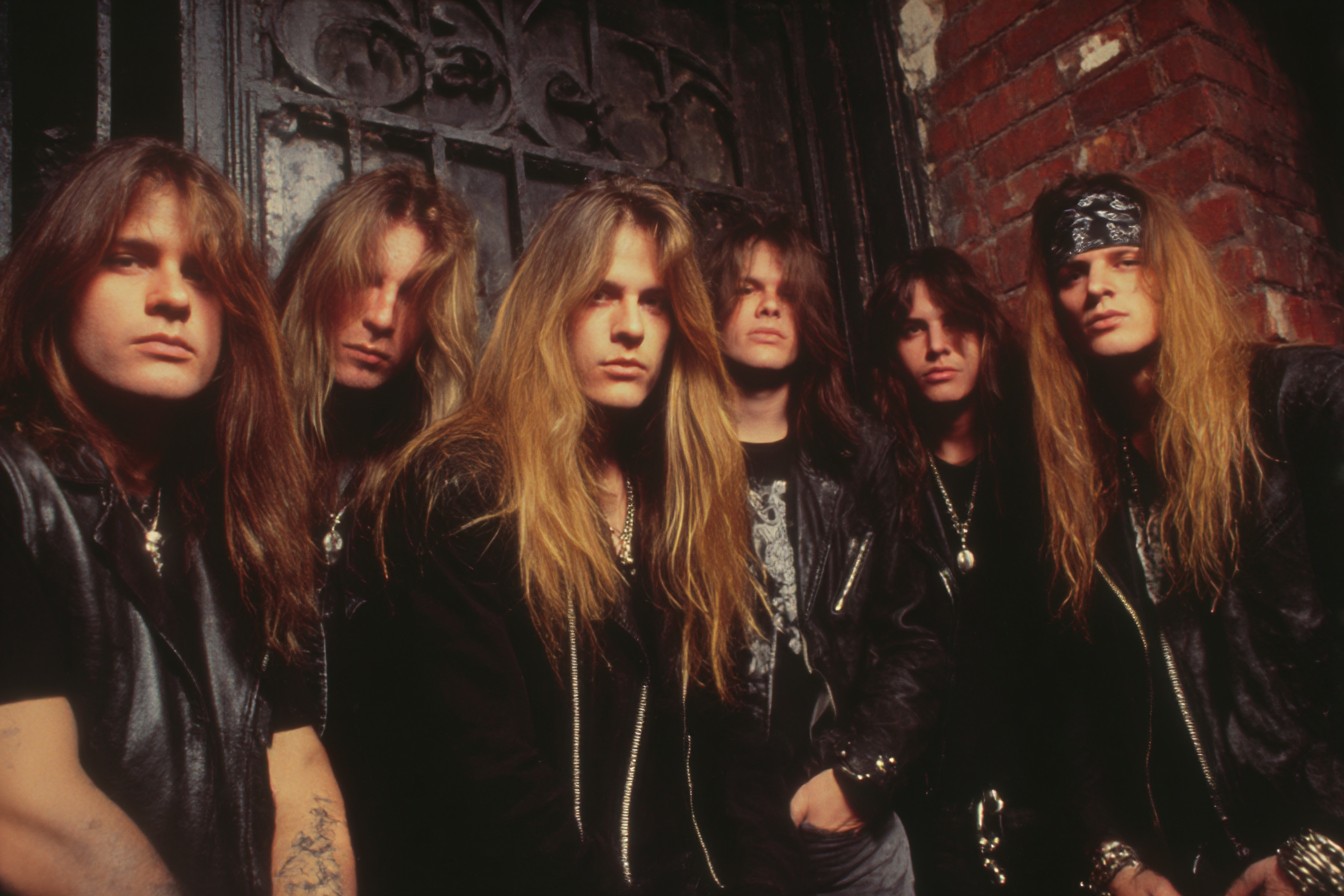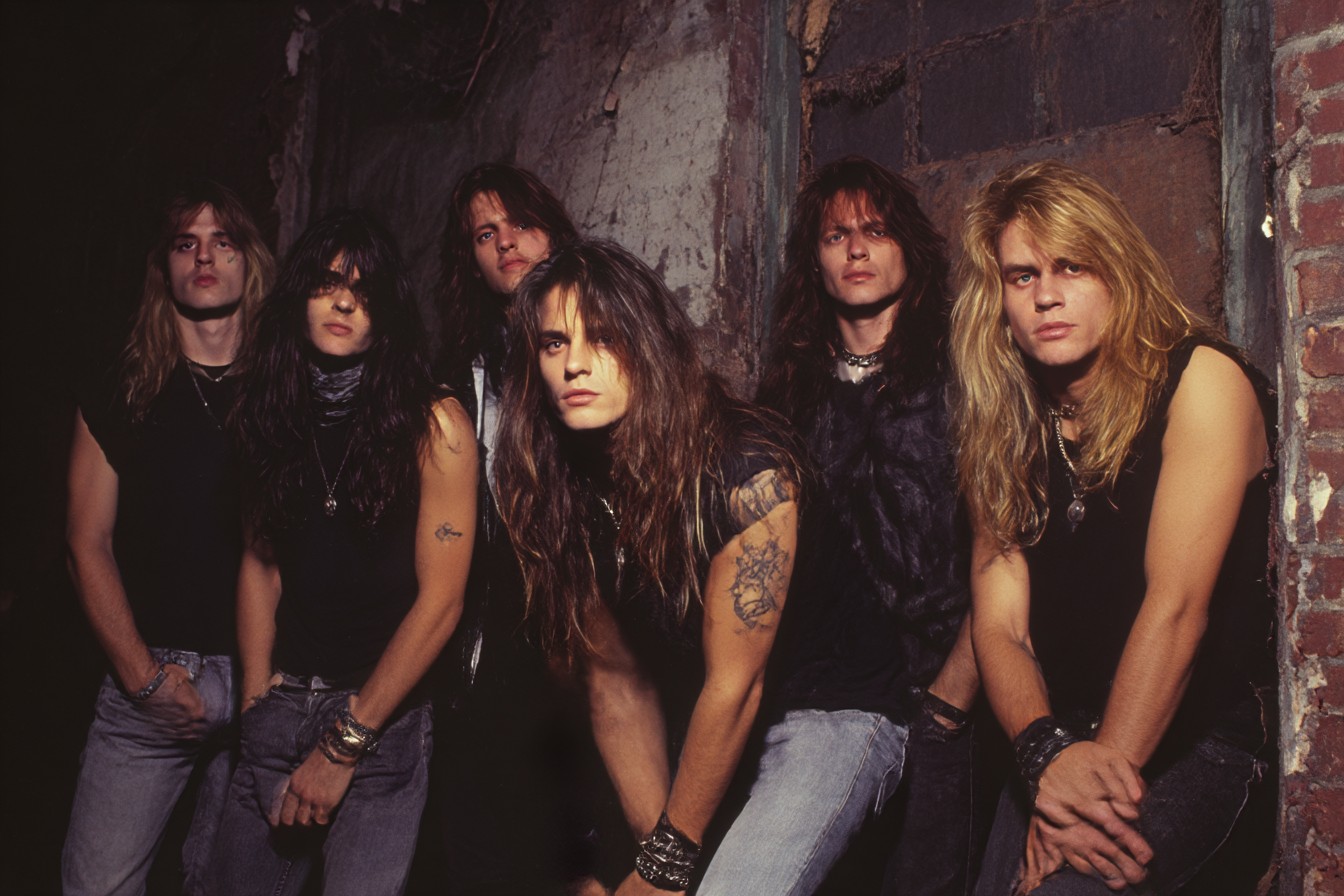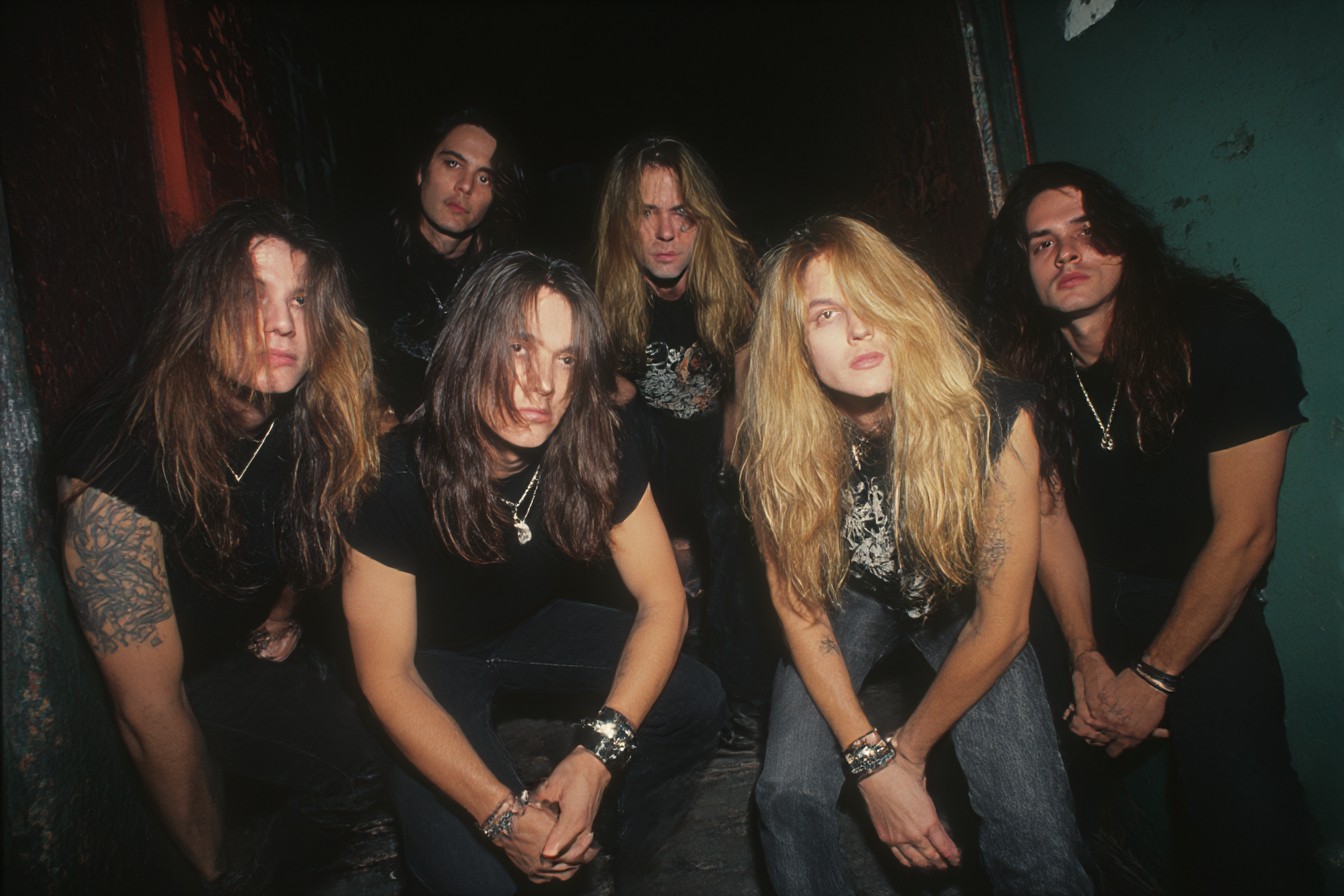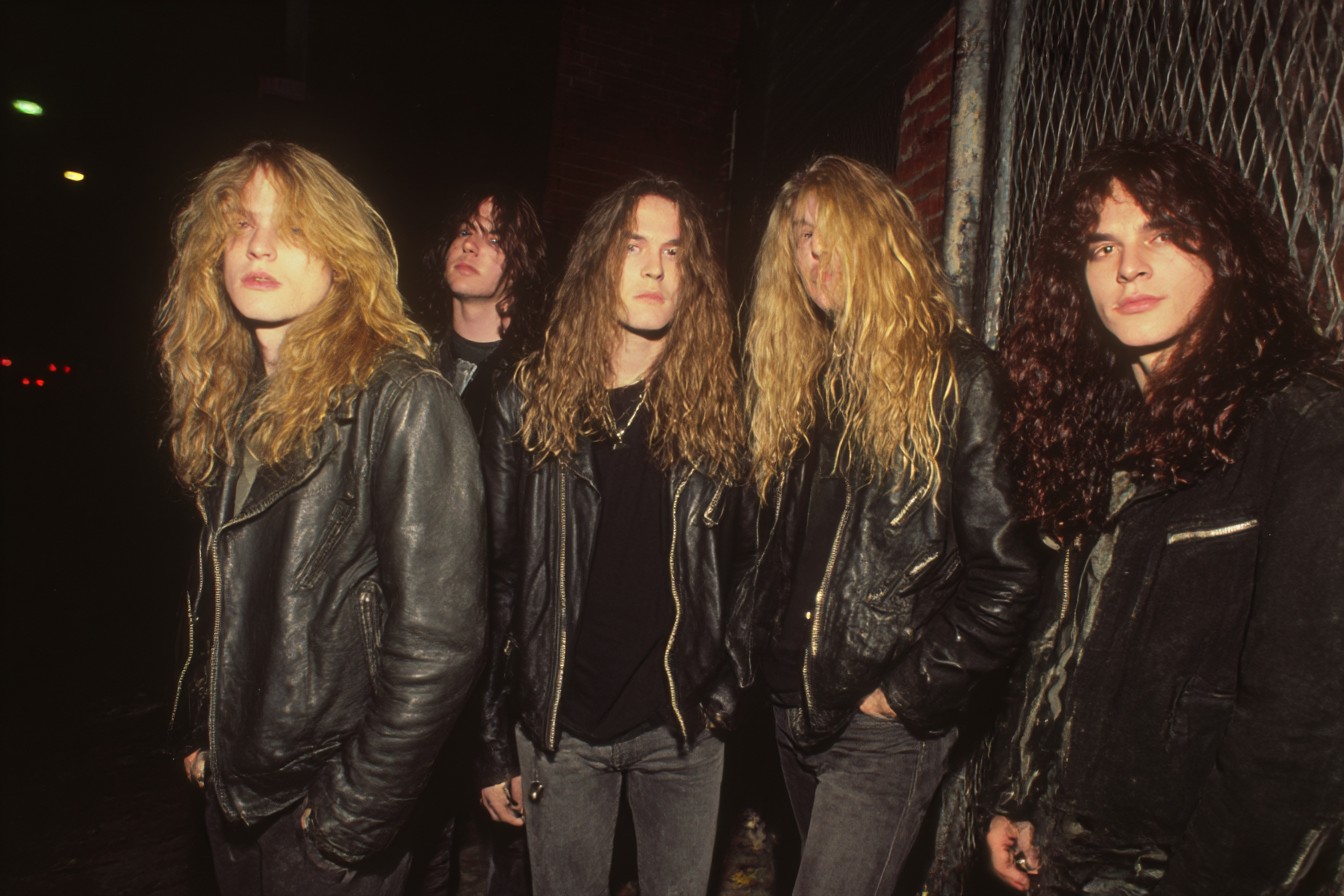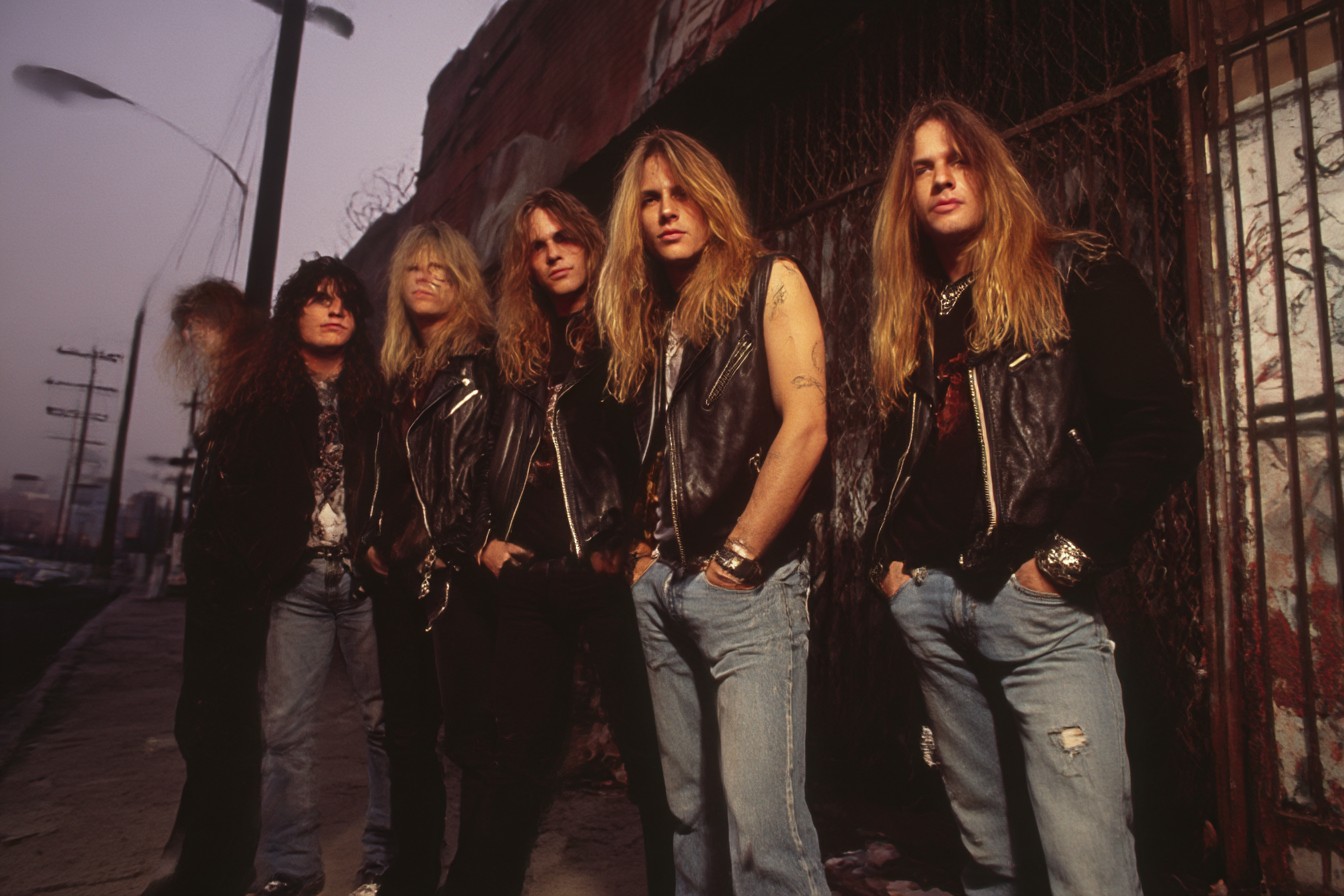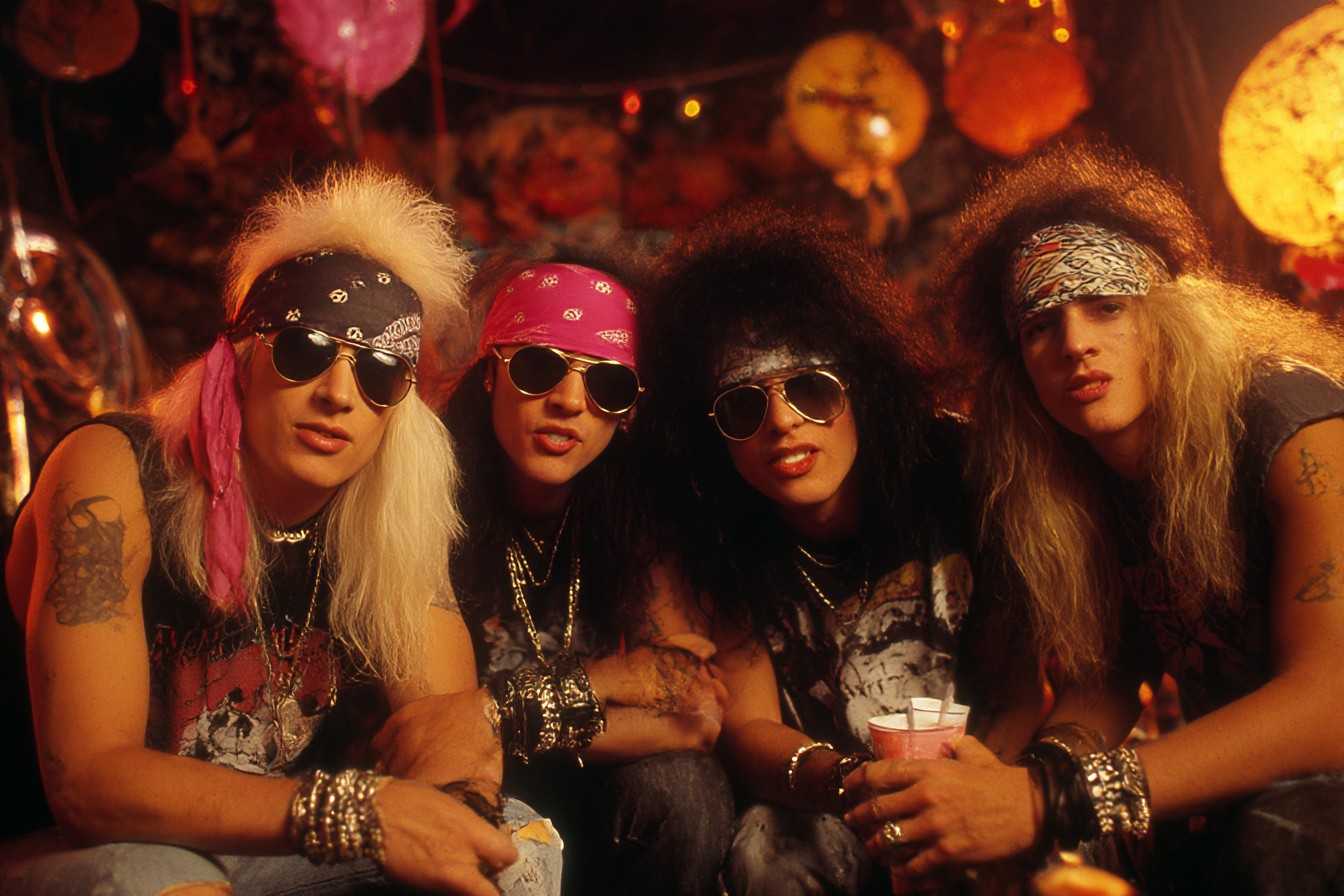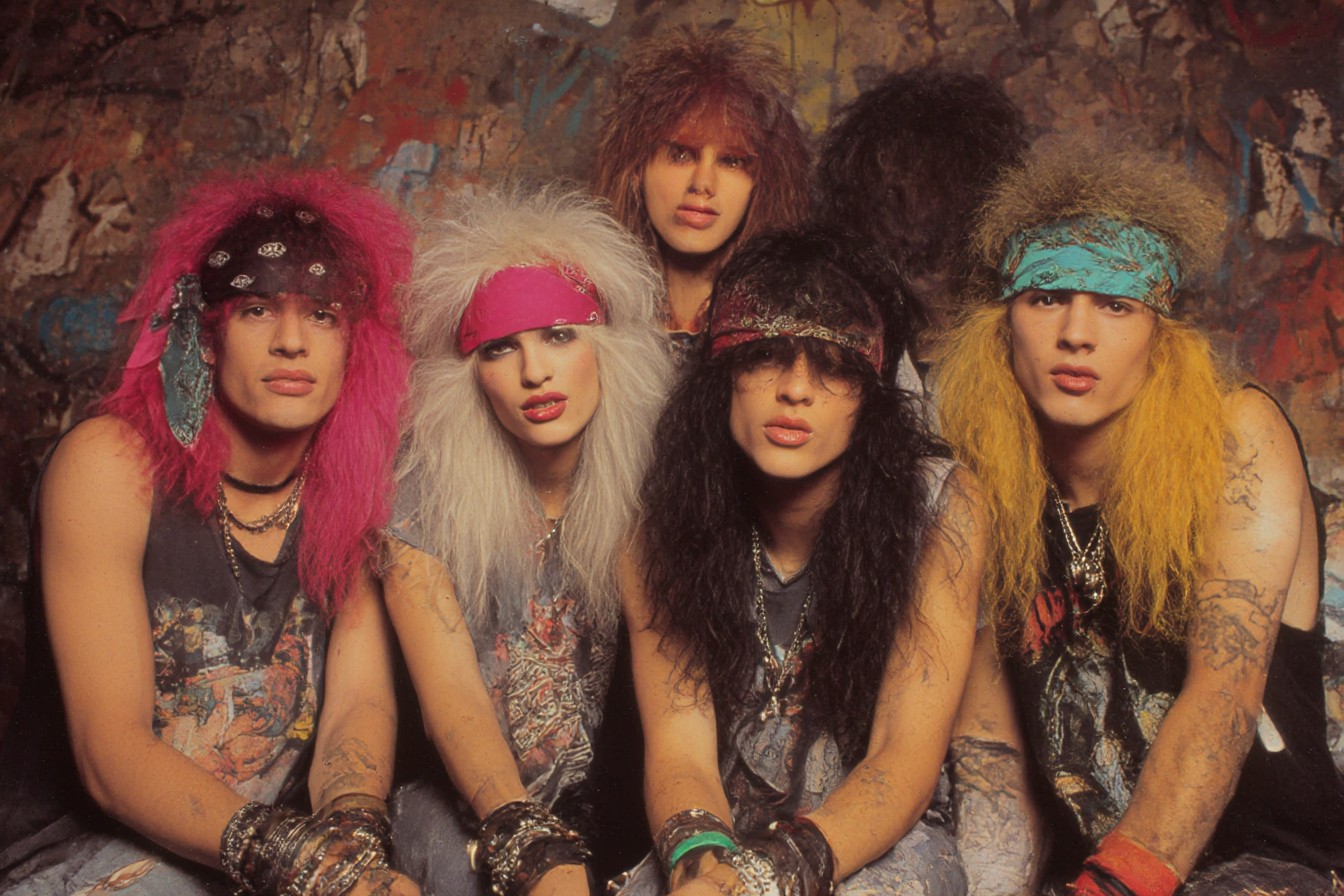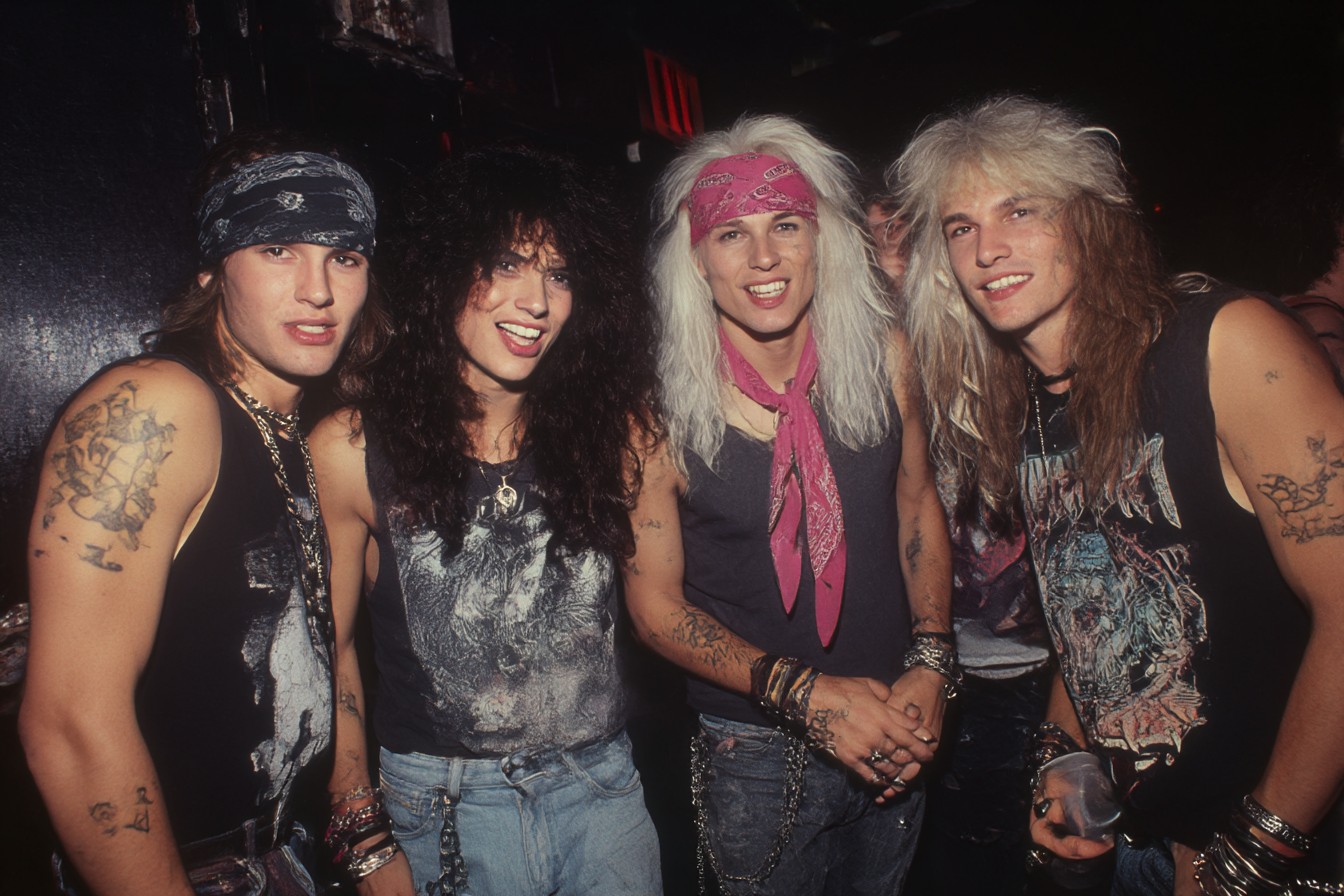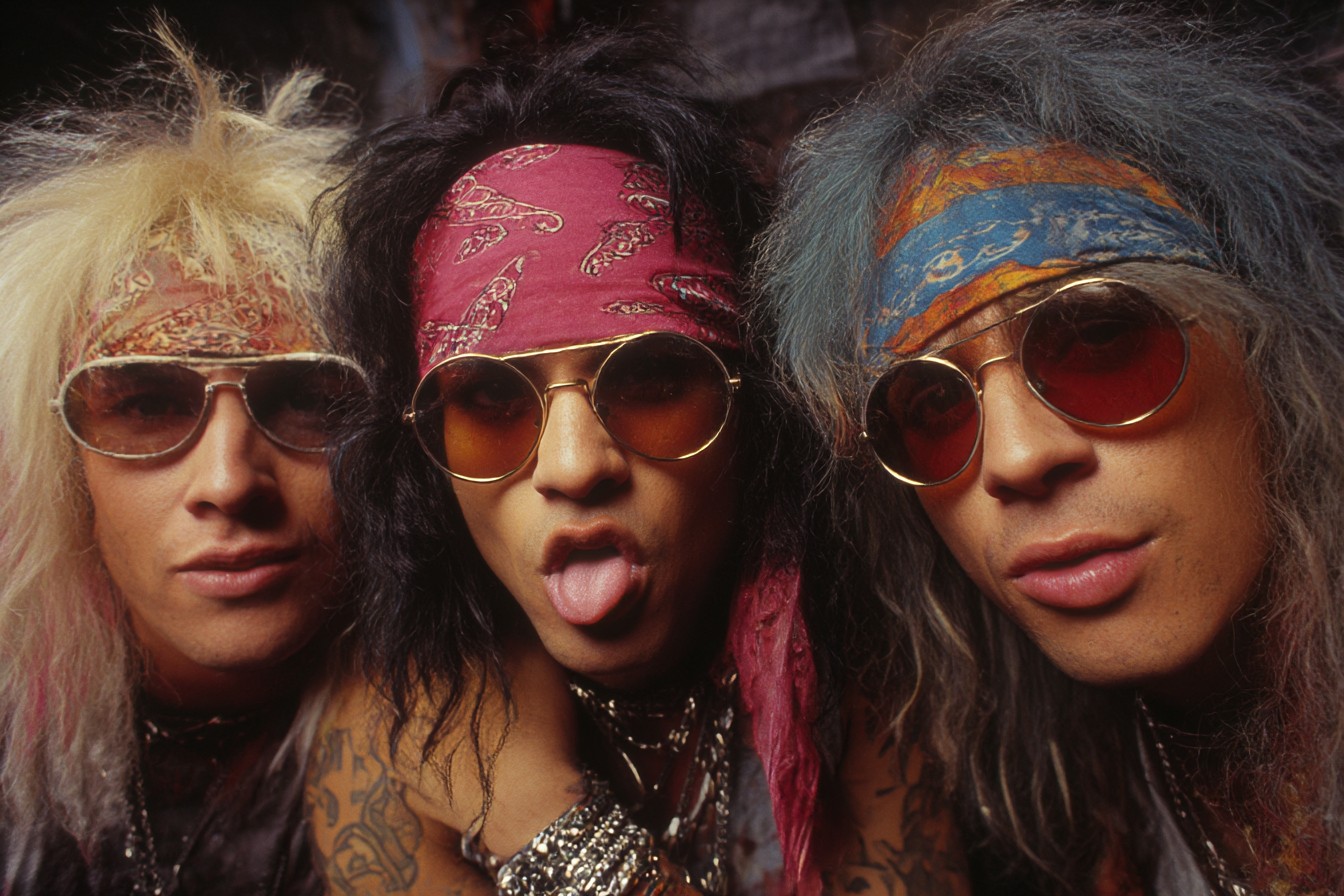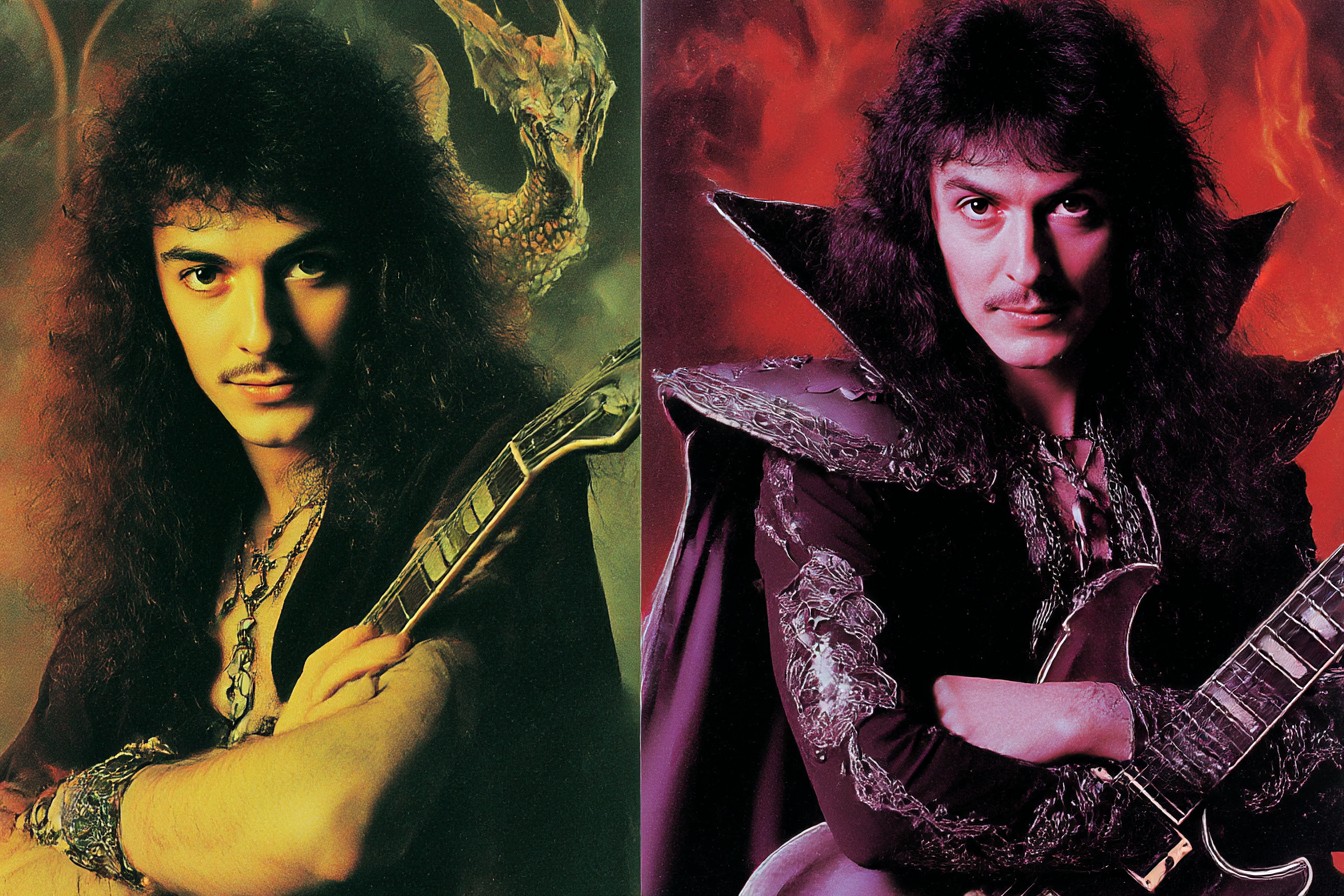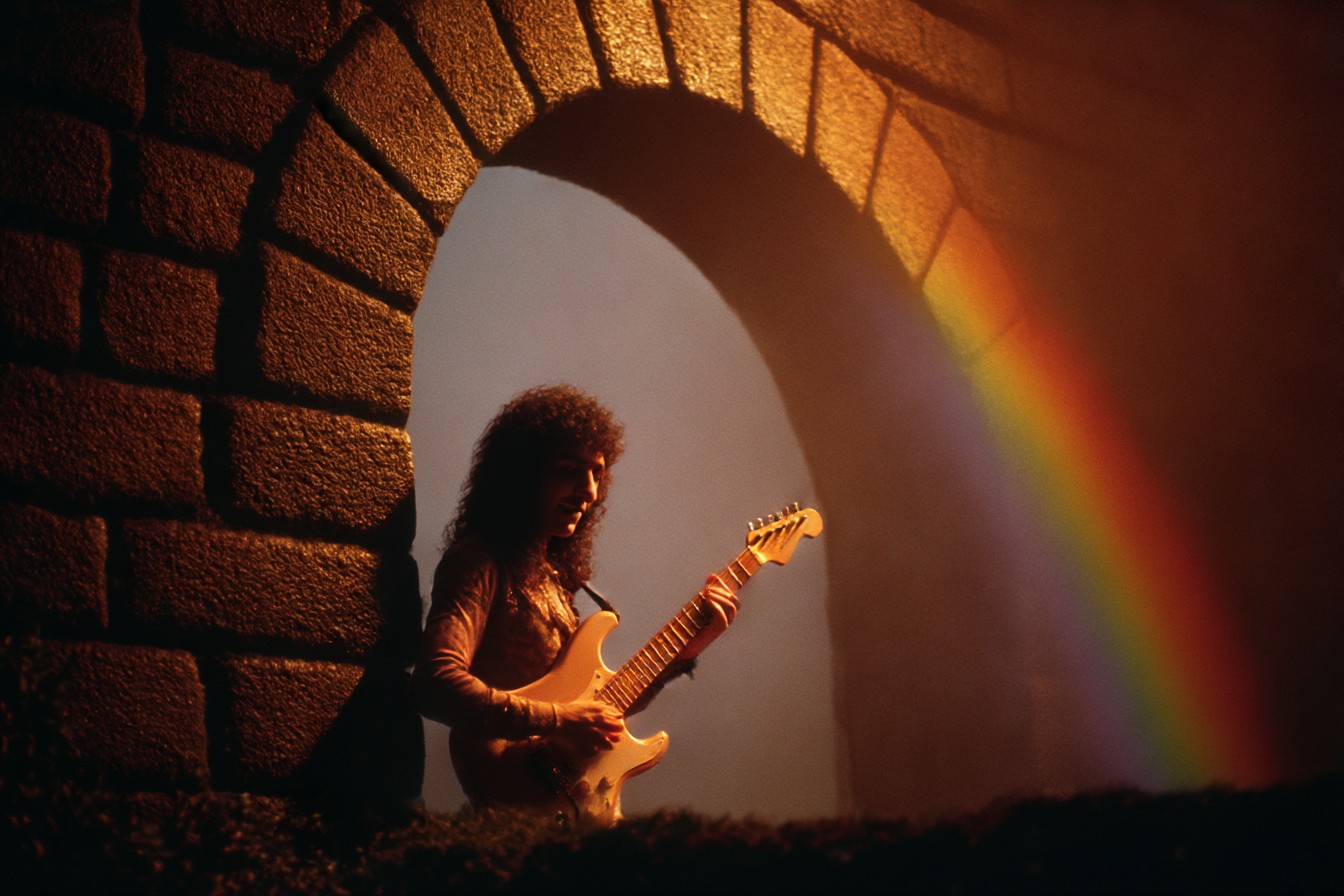There are certain decisions in life that register as bad ideas even while you’re making them. Like that time I thought cutting my own hair before a job interview would save money (it did not, and neither did I get the job). Or when I decided to explain the production differences between Metallica’s “Justice” and “Black” albums to a date who had made the mistake of casually mentioning she “kind of liked that Enter Sandman song” (there was no second date). But perhaps none quite as spectacularly misguided as my choice to wear a Cannibal Corpse t-shirt to the Callahan family reunion of 1994.
In my defense—though there is truly no adequate defense—I was 27, running on about three hours of sleep after covering a show the night before, and had completely forgotten about the reunion until my mother called that morning with the specific tone that communicates “I’m not angry, just disappointed” before you’ve even done the disappointing thing yet.
“You’re coming to Aunt Meredith’s for the reunion, right?” She didn’t phrase it as a question so much as a statement with a very thin veneer of interrogative courtesy.
“Uh, yeah. Of course.” I scrambled around my apartment, looking for clean clothes while trying to sound like a functional adult who definitely remembers family obligations. “What time is that again?”
The sigh on the other end of the line could have powered a small wind farm. “One o’clock, Mike. The same time it’s been for the past twenty years.”
It was currently 12:17. Aunt Meredith lived 30 minutes away on a good traffic day. This was not shaping up to be a good traffic day.
I threw on the first reasonably clean clothes I could find—jeans that passed the sniff test and a black t-shirt grabbed from the “probably clean enough” pile on my desk chair. I was halfway to the car when I glanced down and realized exactly which shirt I’d mindlessly put on.
It was my Cannibal Corpse “Butchered at Birth” shirt. For those unfamiliar with death metal fashion, this is not what one might call “family reunion appropriate attire.” The artwork features… well, let’s just say it makes Hieronymus Bosch look like he paints greeting cards for Hallmark. I had acquired it at their show the previous month, where I’d been doing a piece on the Florida death metal scene for the magazine. It was a fantastic shirt for establishing credibility at extreme metal shows and completely horrifying literally everyone else on the planet.
I stood in my apartment parking lot for approximately 17 seconds contemplating my options. Go back upstairs and change, definitely arriving late enough to earn The Look from not just Mom but the entire Callahan extended universe? Or press forward with the shirt and deal with the consequences?
I chose option three: grab a flannel from the back seat of my car, button it up enough to mostly hide the artwork, and hope nobody would notice. The Callahan family reunion was, after all, not generally a formal affair. Uncle Pete always showed up in the same oil-stained John Deere cap he’d been wearing since the Carter administration. Surely nobody would be scrutinizing my attire too closely.
This represents a special category of self-delusion that I’ve perfected over the years.
I arrived at 1:22, which in Callahan time is technically only mildly late rather than catastrophically so. The family had already congregated in Aunt Meredith’s backyard, a well-manicured suburban oasis that somehow always smelled like cinnamon regardless of season or menu. I managed to slip in relatively unnoticed, grabbing a paper plate and loading it with potato salad as camouflage.
For about twenty minutes, my strategy seemed to be working. I made small talk with cousins I saw once a year, dodged questions about “when I was going to get a real job” from Uncle Frank (writing for a national music magazine apparently not qualifying as employment in his retirement-from-accounting perspective), and kept my flannel buttoned despite the June heat.
Then came the moment that would forever alter the Callahan family dynamic. As I was explaining to my cousin’s nine-year-old son that no, Guitar Hero was not the same as actually playing guitar, my grandmother approached.
Grandma Eleanor was the undisputed matriarch of the Callahan clan. At 83, she stood barely five feet tall but somehow always gave the impression of looking down at you from a great height. She was old-school Catholic, had never been seen in public without pearls, and had once sent a soup back at Olive Garden for being “too spicy” (it was minestrone). When I was a kid, she had regularly expressed concern that my interest in “that heavy metal business” might be opening doorways to satanic influence. We’d reached a kind of détente in my adulthood where she didn’t mention my musical tastes, and I didn’t mention that I’d stopped going to church sometime during the first Bush administration.
“Michael,” she said, using my full name as she’d done since birth despite my decades of insisting on “Mike.” She was fanning herself with a paper plate. “It’s 85 degrees. Why on earth are you wearing that heavy shirt?”
Before I could formulate a response, my younger cousin Tyler—always the family instigator—chimed in: “Yeah, Mike, you hiding something under there?” And with the surgical precision of someone who has spent a lifetime perfecting the art of causing maximum familial chaos, he reached over and flicked open the top button of my flannel.
The partially revealed monstrosity that was my Cannibal Corpse shirt immediately drew the attention of everyone within a ten-foot radius. I saw my mother’s eyes widen in horror from across the yard, somehow sensing a disturbance in the force. Uncle Frank’s bushy eyebrows disappeared entirely into his hairline. My cousin’s nine-year-old looked like he’d just discovered Christmas had been moved to weekly.
But it was Grandma Eleanor’s reaction that defied every expectation I’d ever had about my grandmother, the laws of nature, and possibly the fundamental principles of reality itself.
She leaned forward, squinting through her bifocals at the death metal abomination now partially visible on my chest. “What is that supposed to be?” she asked, her tone more curious than condemning.
“It’s, uh… a band called Cannibal Corpse,” I admitted, already mentally composing my obituary. “They’re death metal. I covered their show for the magazine last month.”
I expected shocked gasps. I expected a lecture on appropriate attire. I expected to be retroactively disowned.
What I did not expect was for Eleanor Callahan, pearls and all, to nod thoughtfully and say, “Well, at least you’re covering something you’re passionate about. Open the shirt. Let me see what all the fuss is about.”
The backyard went silent. Even the ambient noise of distant lawnmowers seemed to pause in anticipation. Slowly, feeling like I was participating in my own execution, I unbuttoned the flannel.
Grandma studied the shirt with the same analytical expression she used when inspecting produce at the farmer’s market. After what felt like several geological epochs, she looked up at me and said, “You know, the composition is actually quite striking. Reminds me of Goya’s darker works. ‘Saturn Devouring His Son,’ perhaps.”
I nearly choked on my potato salad. “You… you know Goya?”
“Michael, I was an art history major before I met your grandfather. Did you think I sprang into existence fully formed as a grandmother?” She adjusted her pearls with a hint of indignation. “Francisco Goya’s Black Paintings were revolutionary—his use of shadow and grotesquerie was a commentary on the violence of the Spanish Civil War and the darkness of the human condition.”
The entire family was now staring at Grandma Eleanor like she’d suddenly started speaking in tongues. My mother had that particular expression that suggested she was reevaluating several decades of her own assumptions.
“This…” Grandma gestured at my shirt, “While considerably less skilled and more gratuitous, is operating in that same tradition. It’s meant to shock, of course, but there’s an artistic lineage there.” She squinted again at the design. “Though I do think the color palette could use some work. All that red gets rather monotonous.”
Uncle Frank found his voice first. “Mom, are you seriously saying you like this… this…”
“Oh, I wouldn’t go that far, Franklin,” she replied, waving him off. “I’m merely pointing out that artistic expression dealing with the macabre has a long and legitimate history. Caravaggio, Géricault’s ‘Raft of the Medusa,’ Bosch’s depictions of hell—all pushed boundaries in their time.” She turned back to me with a knowing look. “I imagine that’s part of the appeal for you too, isn’t it, Michael? The transgressive nature of it?”
I nodded, momentarily stunned into monosyllabic responses. “Yeah.”
“You see?” she said to the bewildered family audience. “Michael isn’t pursuing devil worship or whatever nonsense people think. He’s participating in an artistic tradition that’s been around since medieval memento mori. It’s just using electric guitars instead of oil paints.”
With that pronouncement, she patted my arm and moved on to inspect the dessert table, leaving me standing there with my shirt fully exposed and my entire concept of my grandmother thoroughly shattered.
The family reunion continued, but with a noticeably different energy. Several cousins I’d rarely spoken to came over to actually ask about the music I covered. Uncle Frank still looked like he was having difficulty processing the conversation but managed a gruff “Your grandma always was full of surprises.” My mother simply shook her head and muttered something that sounded like “Fifty-eight years and I’m still learning things about that woman.”
Later, as the gathering was winding down, Grandma pulled me aside by the punch bowl. “Next time, perhaps wear something a little less provocative for a family event,” she said, her voice returning to its more familiar gently chiding tone. “But never be ashamed of what interests you, Michael. Life’s too short to pretend you’re something you’re not.”
She straightened my collar with the practiced movement of someone who’s been adjusting family members’ appearances for the better part of a century. “Your grandfather was a jazz musician when I met him, you know. My parents were scandalized—they considered it little better than brothel music. But he played with such joy that I couldn’t help falling in love with him… and the music too, eventually.”
I blinked at this new revelation. “Grandpa played jazz? I never knew that.”
“Hammond organ. Quite good, actually. He gave it up when your father was born—practical considerations, you understand. But he never stopped listening.” Her eyes took on a distant quality. “I still have his records in the attic. You should come by sometime. You might be surprised what you’d find.”
That conversation marked a turning point in my relationship with my grandmother. Over the following years, I visited her regularly, often bringing albums I thought might interest her based on her surprisingly eclectic knowledge of music history. She never quite developed a taste for Cannibal Corpse (“Too repetitive, and the vocals are frankly ridiculous, Michael”), but she had unexpectedly strong opinions about Black Sabbath (“Excellent atmospherics”) and became quite fond of early Metallica (“Technically impressive compositions”).
Before she passed away in 2010, she left me a box containing my grandfather’s jazz collection—immaculately preserved Blue Note and Verve Records pressings that any collector would kill for—along with a note that read simply: “Music that shocks one generation becomes classics to the next. Keep listening with open ears. Love, Grandma.”
I still wear band shirts to family reunions occasionally—though I’ve upgraded to somewhat less graphic designs. But whenever I do, I think about that day and the unexpected lesson from Eleanor Callahan: that authenticity trumps propriety, that passion deserves respect even when tastes differ, and that you should never, ever make assumptions about what your grandmother might know about extreme art forms.
Oh, and I finally did explain to my mother why Grandma had such a sophisticated take on provocative artwork. Turns out that art history degree wasn’t the only surprise in Eleanor’s past. In the late 1940s, she’d worked briefly as an assistant curator at a modern art gallery in Chicago, where she’d helped mount one of the first American exhibitions of surrealist art—work that had scandalized much of the public at the time.
“She never told me,” Mom said, shaking her head. “I just assumed she’d always been…”
“A grandmother?” I suggested.
“Exactly.” Mom laughed. “I guess she was right. We all contain multitudes.”
Indeed we do. And sometimes those multitudes include an elderly Catholic grandmother who can contextualize death metal imagery within the broader tradition of transgressive art while wearing perfectly matched pearls and sensible shoes.
